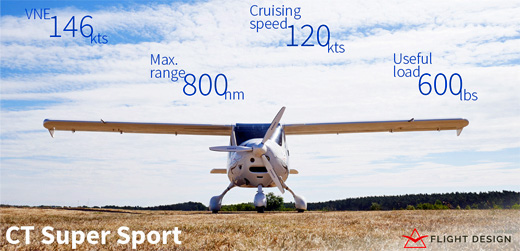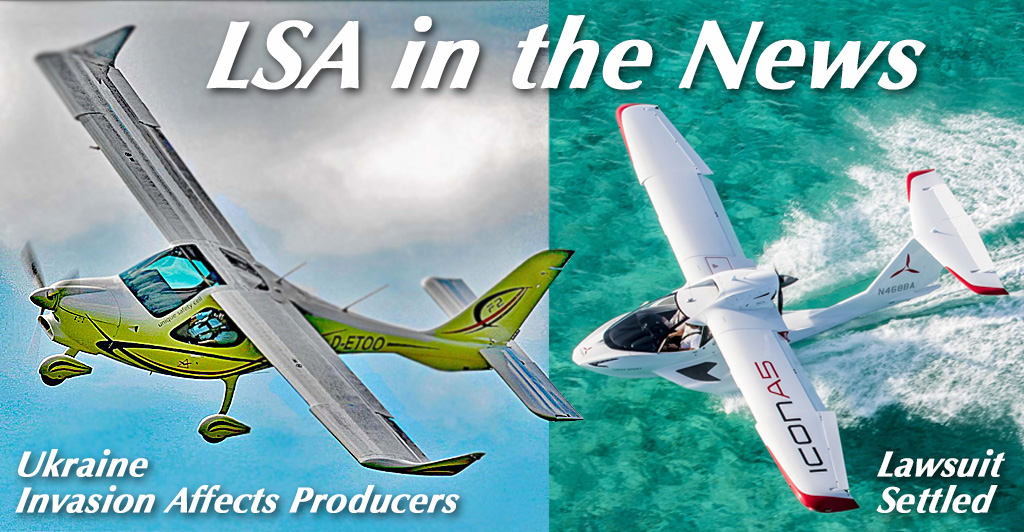
Two wildly divergent events occurred in the last few days. They are completely unrelated yet they show the global interplay in modern light aviation. One story involves relative newcomer Icon Aircraft and their A5 LSA seaplane. The other revolves around the producer of the most successful LSA in America, Flight Design. Both airplane producer stories made it into mainstream media. If we go way back in time, to 2003, that is, before Light-Sport Aircraft, we saw a world where Americans flew kit-built airplanes while European pilots were flying what they called ultralights or microlights. Of course, this is an oversimplification but we had no idea the two methods of production would converge as they have in the last two decades. Using widely-accepted consensus standards, Light-Sport Aircraft can operate in multiple countries — thanks to the useful work of many volunteers that assembled and maintain ASTM standards embraced by FAA and other CAAs all over the planet.


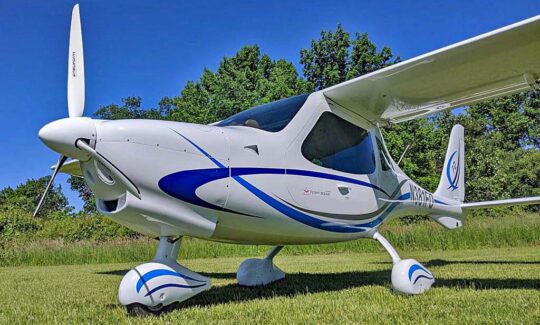 Both airplane producer stories made it into mainstream media.
If we go way back in time, to 2003, that is, before Light-Sport Aircraft, we saw a world where Americans flew kit-built airplanes while European pilots were flying what they called ultralights or microlights. Of course, this is an oversimplification but we had no idea the two methods of production would converge as they have in the last two decades.
Using widely-accepted consensus standards, Light-Sport Aircraft can operate in multiple countries — thanks to the useful work of many volunteers that assembled and maintain ASTM standards embraced by FAA and other CAAs all over the planet.
Let's look at these two stories…
Both airplane producer stories made it into mainstream media.
If we go way back in time, to 2003, that is, before Light-Sport Aircraft, we saw a world where Americans flew kit-built airplanes while European pilots were flying what they called ultralights or microlights. Of course, this is an oversimplification but we had no idea the two methods of production would converge as they have in the last two decades.
Using widely-accepted consensus standards, Light-Sport Aircraft can operate in multiple countries — thanks to the useful work of many volunteers that assembled and maintain ASTM standards embraced by FAA and other CAAs all over the planet.
Let's look at these two stories…
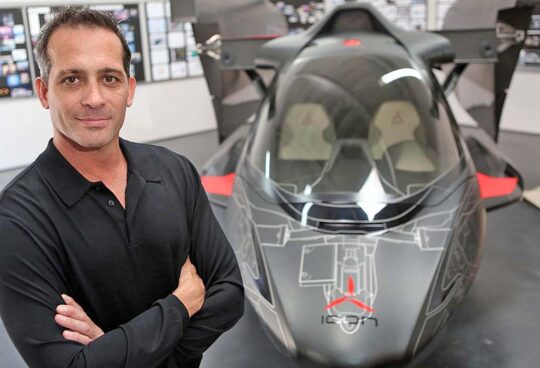
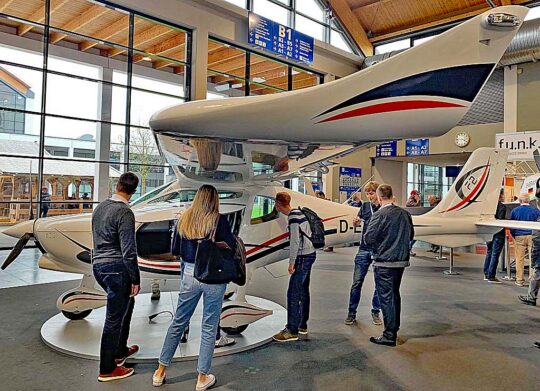
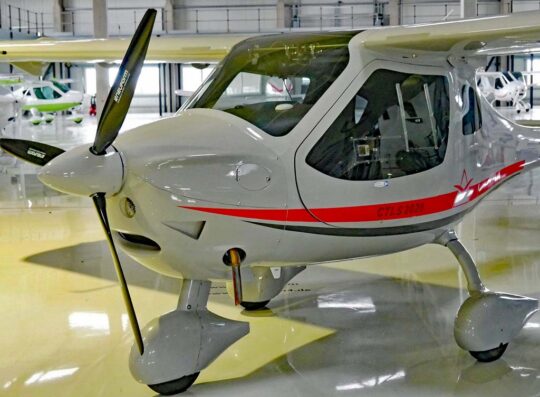 “At this point, there are about 10 to 12 airframes at the Kherson plant,” Peghiny said to AOPA. "Ordinarily, the airframes would be sent to Flight Design’s final assembly and completion center in the city of Šumperk in the Czech Republic."
“We’ve found a new, 25,000-square-foot site [in Šumperk that is] suitable for use as a production and paint shop, and will use that in the future,” Peghiny said in the AOPA article. Engineering work is also conducted in Šumperk.
"Flight Design is offering to move its Ukraine staff and their families to the Šumperk facility," AOPA wrote. "Peghiny said that the Kherson plant will function as long as conditions allow. However, tooling currently remaining in Kherson will have to be replaced by newly manufactured tooling for use in Šumperk. The company will fund new tooling, but it may take six to nine months to build."
“At this point, there are about 10 to 12 airframes at the Kherson plant,” Peghiny said to AOPA. "Ordinarily, the airframes would be sent to Flight Design’s final assembly and completion center in the city of Šumperk in the Czech Republic."
“We’ve found a new, 25,000-square-foot site [in Šumperk that is] suitable for use as a production and paint shop, and will use that in the future,” Peghiny said in the AOPA article. Engineering work is also conducted in Šumperk.
"Flight Design is offering to move its Ukraine staff and their families to the Šumperk facility," AOPA wrote. "Peghiny said that the Kherson plant will function as long as conditions allow. However, tooling currently remaining in Kherson will have to be replaced by newly manufactured tooling for use in Šumperk. The company will fund new tooling, but it may take six to nine months to build."

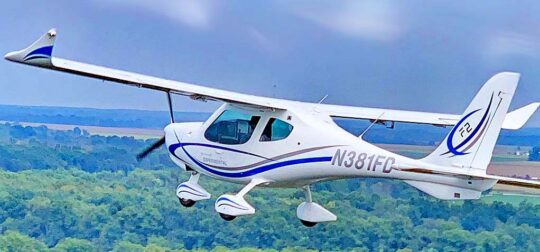 "Flight Design employs just under 200 technicians, assemblers, and engineers currently at the Kherson plant," continued Boatman, "and according to Peghiny, the company has been ramping up that number. 'We were hiring more aggressively in the past year because of the popularity of the F2, but the other models in the range have been selling well in Europe — simpler, lighter models in particular,' Tom said." Of course, Tom refers to the CT-series including CTLS that is one of the most popular LSA in America.
“We know [our employees] very well,” Peghiny said in Boatman's article. “Some have been with the company more than 20 years. We’re good friends, and we take this very personally.”
"Flight Design employs just under 200 technicians, assemblers, and engineers currently at the Kherson plant," continued Boatman, "and according to Peghiny, the company has been ramping up that number. 'We were hiring more aggressively in the past year because of the popularity of the F2, but the other models in the range have been selling well in Europe — simpler, lighter models in particular,' Tom said." Of course, Tom refers to the CT-series including CTLS that is one of the most popular LSA in America.
“We know [our employees] very well,” Peghiny said in Boatman's article. “Some have been with the company more than 20 years. We’re good friends, and we take this very personally.”
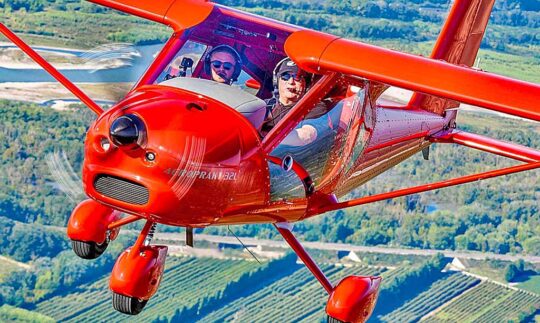 Dave Hirschman wrote, "Dennis Long, a dealer for Aeroprakt… said he spoke with factory officials who said they plan to remain on the job. 'They told me they’re going to keep making airplanes until they can’t'," AOPA reported. 'For the time being, it’s business as usual, although my next two airplanes will likely have to be shipped from Poland because the port of Odessa [in Ukraine] is closed.'”
Aeroprakt has steady registered more aircraft with the FAA. When asked by AOPA's writer, Dennis said, "Right now, due to all the uncertainty, I’m not taking any new deposits. I’m more concerned about the people over there than the airplanes at this moment."
Dave Hirschman wrote, "Dennis Long, a dealer for Aeroprakt… said he spoke with factory officials who said they plan to remain on the job. 'They told me they’re going to keep making airplanes until they can’t'," AOPA reported. 'For the time being, it’s business as usual, although my next two airplanes will likely have to be shipped from Poland because the port of Odessa [in Ukraine] is closed.'”
Aeroprakt has steady registered more aircraft with the FAA. When asked by AOPA's writer, Dennis said, "Right now, due to all the uncertainty, I’m not taking any new deposits. I’m more concerned about the people over there than the airplanes at this moment."
 Rather loudly and persistently I beat the drum about "affordable aircraft," but readers also enjoy learning about other aircraft. I will never write about jets or multimillion-dollar turbines but I will continue to follow any "light" aircraft that meets LSA parameters now or after the Mosaic rule.
In this article I will describe how two aircraft are pursuing conventional certification: Flight Design’s F2-CS23 and Icon’s A5.
Rather loudly and persistently I beat the drum about "affordable aircraft," but readers also enjoy learning about other aircraft. I will never write about jets or multimillion-dollar turbines but I will continue to follow any "light" aircraft that meets LSA parameters now or after the Mosaic rule.
In this article I will describe how two aircraft are pursuing conventional certification: Flight Design’s F2-CS23 and Icon’s A5.
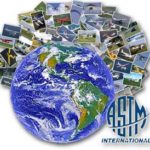 Contrary to common language, LSA are not "certified." Instead a manufacturer declares they meet ASTM standards and FAA "accepts" that declaration. Frequently at first, FAA audited producers in a point-by-point check of their declaration plus verifying that producers use generally-accepted best practices in their manufacturing. Companies with prior approvals may not be required to undergo an audit; it's always FAA's choice.
I've been involved with ASTM for many years and I can attest to these standards being very rigorous. They were welcomed by many countries where they are in active use. Indeed, FAA is using ASTM standards for LSA as a model for a future approval system for Part 23 general aviation aircraft. Nonetheless, a Standard Certificate is required for some countries; LSA have a Special Certificate. So, some companies believe it is in their best interest to obtain the higher level of approval.
Contrary to common language, LSA are not "certified." Instead a manufacturer declares they meet ASTM standards and FAA "accepts" that declaration. Frequently at first, FAA audited producers in a point-by-point check of their declaration plus verifying that producers use generally-accepted best practices in their manufacturing. Companies with prior approvals may not be required to undergo an audit; it's always FAA's choice.
I've been involved with ASTM for many years and I can attest to these standards being very rigorous. They were welcomed by many countries where they are in active use. Indeed, FAA is using ASTM standards for LSA as a model for a future approval system for Part 23 general aviation aircraft. Nonetheless, a Standard Certificate is required for some countries; LSA have a Special Certificate. So, some companies believe it is in their best interest to obtain the higher level of approval.
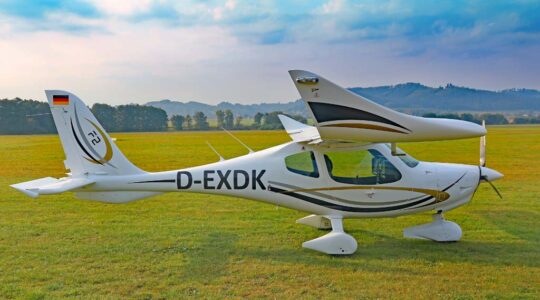 “We couldn’t be happier to see this important step for the F2 program, which ultimately will lead to the F4 four-seat version and the all-electric F2e,” said Matthias Betsch, Head of Flight Design's Design Organization department that created the F-Series and many of its advanced concepts.
"The F2-CS23 is the next step in Flight Design’s ‘Vision Zero’ concept which incorporates all commercially available safety features appropriate for this type of aircraft," the company elaborated. "These features include: a passive stall and spin resistant airframe design; airframe emergency parachute system; Amsafe-brand airbags and inertial reel harnesses; Garmin ESP (electronic stability and envelope protection); a strong occupant-protective enclosure for the pilot and passengers; automatic fuel management; simplified controls such as a combined throttle and brake lever; and a more modern, car-like atmosphere and operation."
“We couldn’t be happier to see this important step for the F2 program, which ultimately will lead to the F4 four-seat version and the all-electric F2e,” said Matthias Betsch, Head of Flight Design's Design Organization department that created the F-Series and many of its advanced concepts.
"The F2-CS23 is the next step in Flight Design’s ‘Vision Zero’ concept which incorporates all commercially available safety features appropriate for this type of aircraft," the company elaborated. "These features include: a passive stall and spin resistant airframe design; airframe emergency parachute system; Amsafe-brand airbags and inertial reel harnesses; Garmin ESP (electronic stability and envelope protection); a strong occupant-protective enclosure for the pilot and passengers; automatic fuel management; simplified controls such as a combined throttle and brake lever; and a more modern, car-like atmosphere and operation."
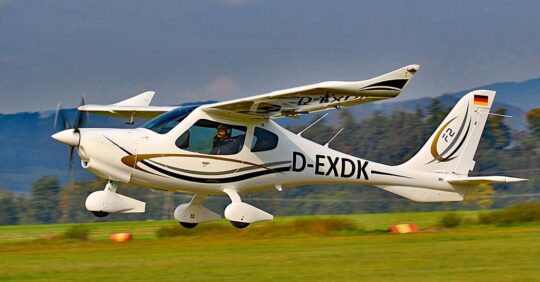
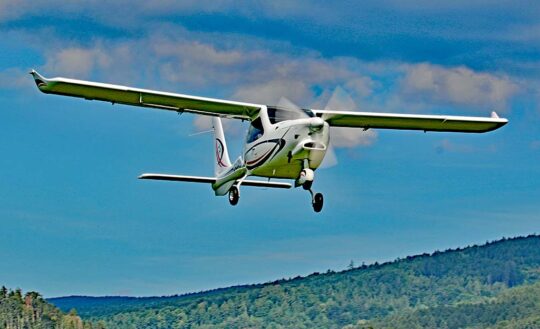 “EASA's CS-23 category is an internationally-recognized certification standard which will allow the new F2-CS23 to be easily accepted in all markets worldwide,” said Dieter Koehler, Project Manager the F2 and F4 projects.
Flight Design sees the F2-CS23 as "an excellent choice for flight schools with its wide and easy-to-enter cockpit, fuel efficiency, unique safety features, and state-of-the-art avionics suite. All new Flight Design aircraft come with carbon compensation up to TBO under Flight Design’s Pro-Climate plan." F2-CS23 follows the company's F2-LSA that began deliveries earlier in 2021.
“EASA's CS-23 category is an internationally-recognized certification standard which will allow the new F2-CS23 to be easily accepted in all markets worldwide,” said Dieter Koehler, Project Manager the F2 and F4 projects.
Flight Design sees the F2-CS23 as "an excellent choice for flight schools with its wide and easy-to-enter cockpit, fuel efficiency, unique safety features, and state-of-the-art avionics suite. All new Flight Design aircraft come with carbon compensation up to TBO under Flight Design’s Pro-Climate plan." F2-CS23 follows the company's F2-LSA that began deliveries earlier in 2021.
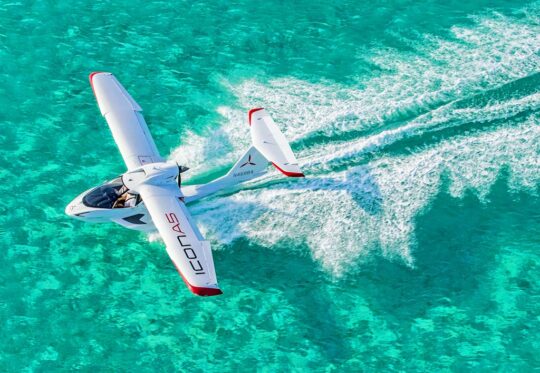 "In countries that do not have a Light-Sport category (Canada and others), the Type Certified version of the
"In countries that do not have a Light-Sport category (Canada and others), the Type Certified version of the 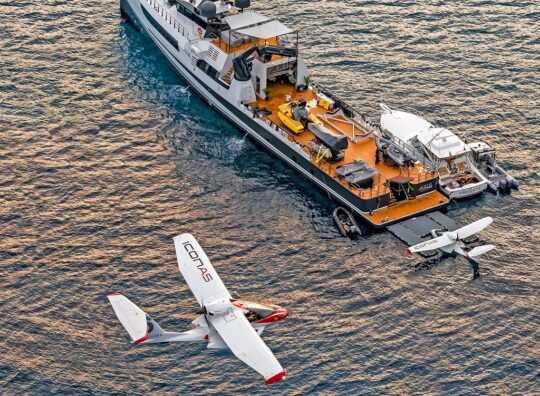 Primary Category certification also has benefits in the U.S., Icon reported. One is that any A&P is authorized to work on it. Because it is not a SLSA, owners will not need to use designated Icon Service Partners, though the company will still encourage them to do so.
Another benefit is international travel, for example, flying your Icon A5 to islands in the Caribbean, or to keep your A5 on a yacht when you are in another country (image). "Light-Sport Aircraft do not receive a Type Certificate," Icon explained, "so typically, special permission is required before you can fly in another country just like if you are flying an Experimental aircraft." Some exceptions exist, notably in the Bahamas, which does allow U.S.-registered LSAs. The Bahamas is further unique among other countries in that they accept FAA's Sport Pilot certificate.
Primary Category certification also has benefits in the U.S., Icon reported. One is that any A&P is authorized to work on it. Because it is not a SLSA, owners will not need to use designated Icon Service Partners, though the company will still encourage them to do so.
Another benefit is international travel, for example, flying your Icon A5 to islands in the Caribbean, or to keep your A5 on a yacht when you are in another country (image). "Light-Sport Aircraft do not receive a Type Certificate," Icon explained, "so typically, special permission is required before you can fly in another country just like if you are flying an Experimental aircraft." Some exceptions exist, notably in the Bahamas, which does allow U.S.-registered LSAs. The Bahamas is further unique among other countries in that they accept FAA's Sport Pilot certificate.
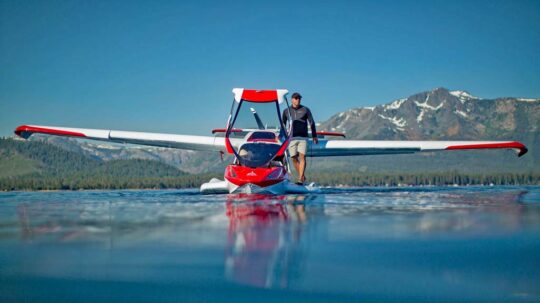 "International expansion has been a critical part of our business plan since day one,” said Jason Huang, President of Icon Aircraft. “People in the U.S. have been able to enjoy adventure flying in the Icon A5 for several years, and we will continue to produce the SLSA version. But now we are excited to introduce the A5 to others around the world. Type Certification is one of the many investments Icon has made to grow our capabilities and improve the A5. We know it will be appreciated by our international deposit holders and sales partners, and we are all very excited for this day to come."
"International expansion has been a critical part of our business plan since day one,” said Jason Huang, President of Icon Aircraft. “People in the U.S. have been able to enjoy adventure flying in the Icon A5 for several years, and we will continue to produce the SLSA version. But now we are excited to introduce the A5 to others around the world. Type Certification is one of the many investments Icon has made to grow our capabilities and improve the A5. We know it will be appreciated by our international deposit holders and sales partners, and we are all very excited for this day to come."
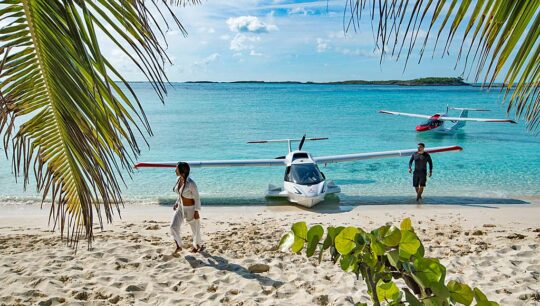 "Note that we will continue to make the SLSA version, as well," assured Huang. This continues the chance for American pilots to fly A5 without the need for an aviation medical, using only their driver's license in lieu of a medical approval.
Why not pursue approval using the coming regulation often referred to as Mosaic?
"Mosaic is an FAA initiative that doesn’t translate globally," stated the company. "Thus, pursuing Primary Category Certification is the action we needed to coincide with our global expansion plans."
"Note that we will continue to make the SLSA version, as well," assured Huang. This continues the chance for American pilots to fly A5 without the need for an aviation medical, using only their driver's license in lieu of a medical approval.
Why not pursue approval using the coming regulation often referred to as Mosaic?
"Mosaic is an FAA initiative that doesn’t translate globally," stated the company. "Thus, pursuing Primary Category Certification is the action we needed to coincide with our global expansion plans."
 https://youtu.be/dxpFU7UfsQo
https://youtu.be/4kBRY79lw5Y
https://youtu.be/dxpFU7UfsQo
https://youtu.be/4kBRY79lw5Y
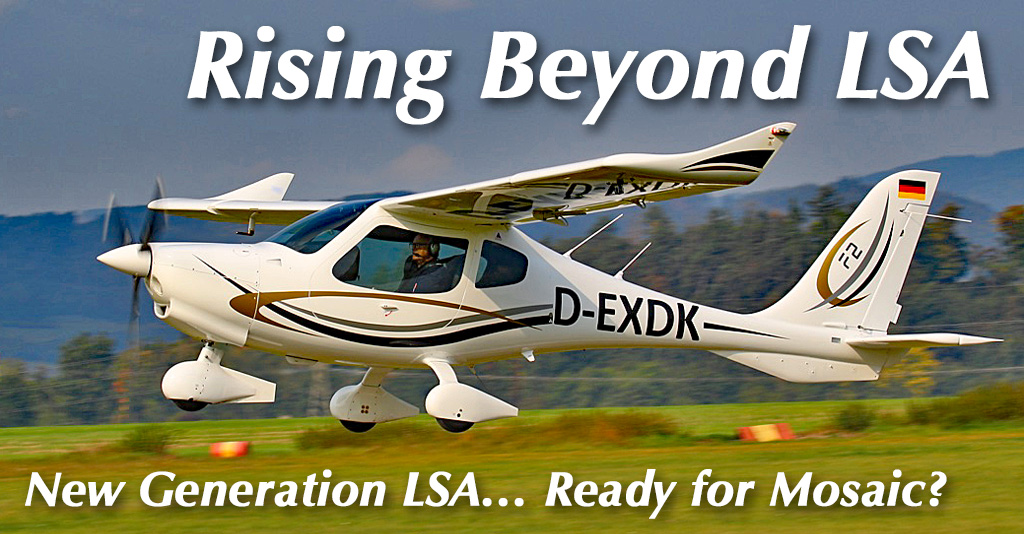
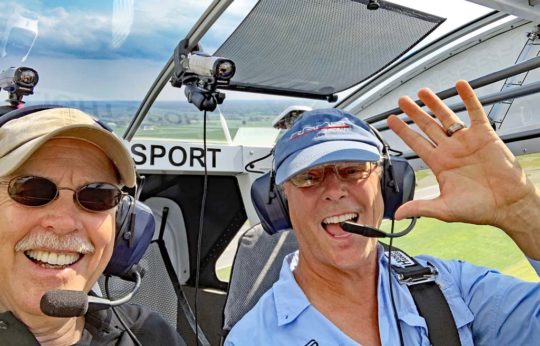 The Covid pandemic of 2020/2021 appears not to have slowed enjoyment of flying for fun… for most of us anyway. I sincerely regret anyone who suffered during this period but sport aviation has held up surprisingly well.
In this article, I will tackle a couple reader questions, the sort I hear all the time. To answer several people with one response, I asked reader John Joyce if I could use his question and name. He consented, so here we go…
The Covid pandemic of 2020/2021 appears not to have slowed enjoyment of flying for fun… for most of us anyway. I sincerely regret anyone who suffered during this period but sport aviation has held up surprisingly well.
In this article, I will tackle a couple reader questions, the sort I hear all the time. To answer several people with one response, I asked reader John Joyce if I could use his question and name. He consented, so here we go…
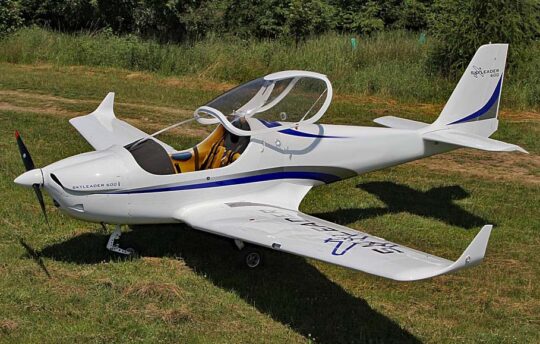 "By way of example," John continued, "there are nearly 300 SportCruisers registered in the US, as well as nearly 350 Flight Design models, but only 3 Skyleaders. I’m not picking on Skyleader; there are many manufacturers with just two, five or 20 registrations in the database."
Matter of fact, our N-number database is another useful reference we offer. You can use the
"By way of example," John continued, "there are nearly 300 SportCruisers registered in the US, as well as nearly 350 Flight Design models, but only 3 Skyleaders. I’m not picking on Skyleader; there are many manufacturers with just two, five or 20 registrations in the database."
Matter of fact, our N-number database is another useful reference we offer. You can use the 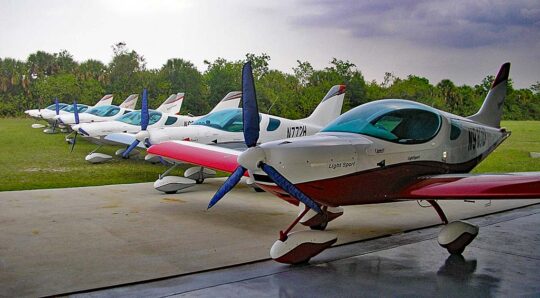
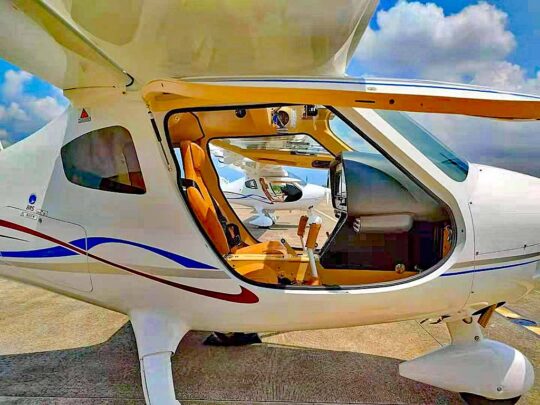
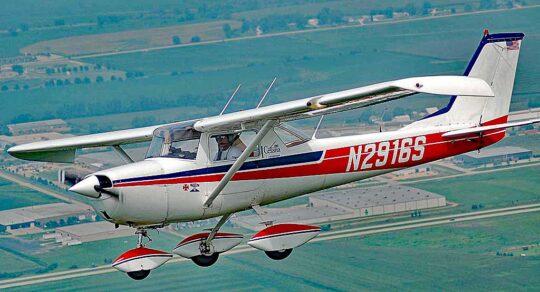
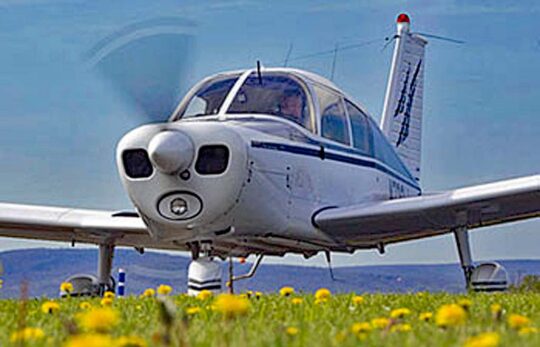
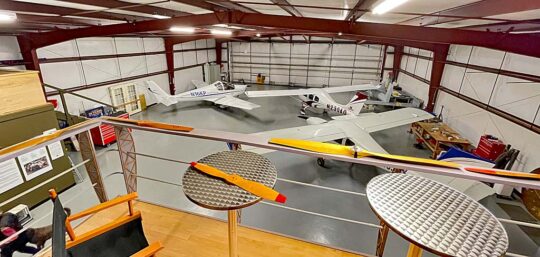
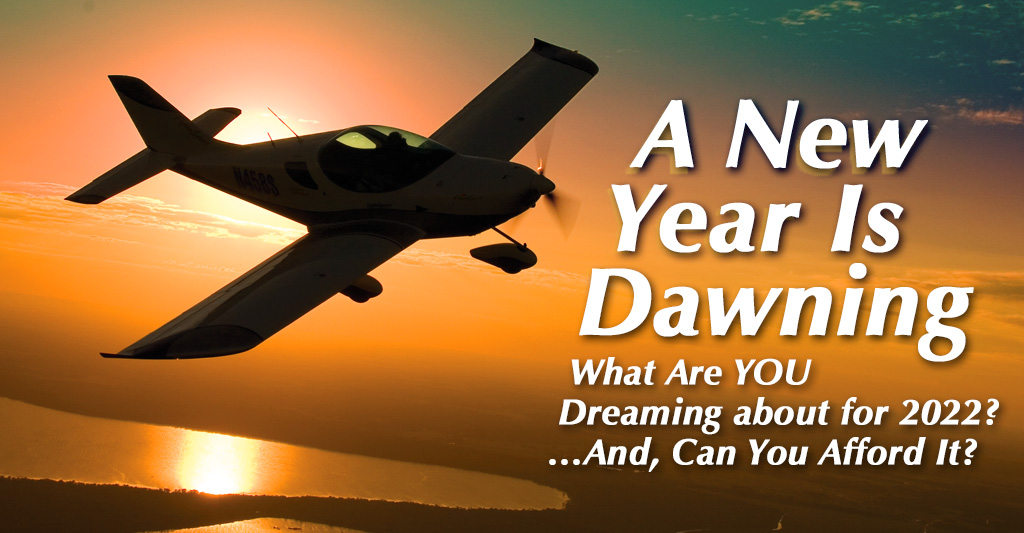
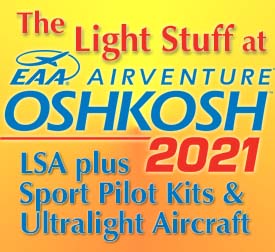 One can always find a few empty spots and wonder if they failed to sell yet it is equally likely a company bought the space but could not attend or exhibit for a variety of reasons. To my eyes and by the numbers, Oshkosh 2021 looked to be a home-run success.
Stories will continue but here I want to address two very different views of AirVenture. On one hand vendors widely reported solid sales. On the other, FAA clarified some questions but raised others. Many frowns were reported when agency boss Steve Dickson held his "Meet the Administrator" session but let's look at the bright side first.
One can always find a few empty spots and wonder if they failed to sell yet it is equally likely a company bought the space but could not attend or exhibit for a variety of reasons. To my eyes and by the numbers, Oshkosh 2021 looked to be a home-run success.
Stories will continue but here I want to address two very different views of AirVenture. On one hand vendors widely reported solid sales. On the other, FAA clarified some questions but raised others. Many frowns were reported when agency boss Steve Dickson held his "Meet the Administrator" session but let's look at the bright side first.
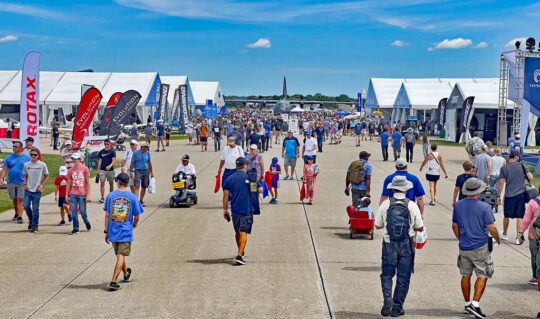 This is not a pace I heard at Sun 'n Fun 2021, for example. That first show of the year was more tentative. People were still frightened by unrelenting news on TV and Sun 'n Fun represented a first step back toward normal. Mind you, I considered the Lakeland show another big success; many others evidently decided by late July that the situation had improved enough for pilots to open their wallets.
Pilots who acted sooner scored an earlier delivery. Many at Oshkosh heard deliveries were already being quoted well into 2022. At Sun 'n Fun we didn't hear that.
My measurement of how the industry is doing is not only to assess the health of suppliers but the willingness of pilot consumers to think about a new purchase. Wary buyers hold back in times of uncertainty so sales of light aircraft at Oshkosh illustrates both pent-up demand and a sense of hopefulness by pilots expecting to get out and enjoy flying.
This is not a pace I heard at Sun 'n Fun 2021, for example. That first show of the year was more tentative. People were still frightened by unrelenting news on TV and Sun 'n Fun represented a first step back toward normal. Mind you, I considered the Lakeland show another big success; many others evidently decided by late July that the situation had improved enough for pilots to open their wallets.
Pilots who acted sooner scored an earlier delivery. Many at Oshkosh heard deliveries were already being quoted well into 2022. At Sun 'n Fun we didn't hear that.
My measurement of how the industry is doing is not only to assess the health of suppliers but the willingness of pilot consumers to think about a new purchase. Wary buyers hold back in times of uncertainty so sales of light aircraft at Oshkosh illustrates both pent-up demand and a sense of hopefulness by pilots expecting to get out and enjoy flying.
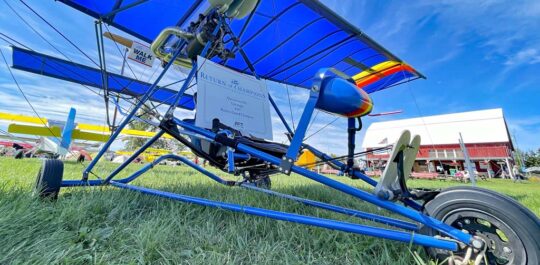
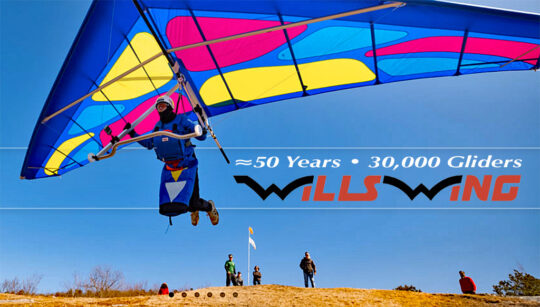
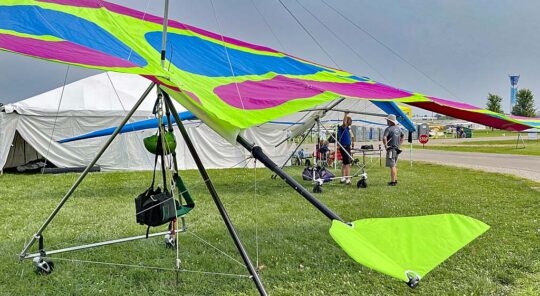
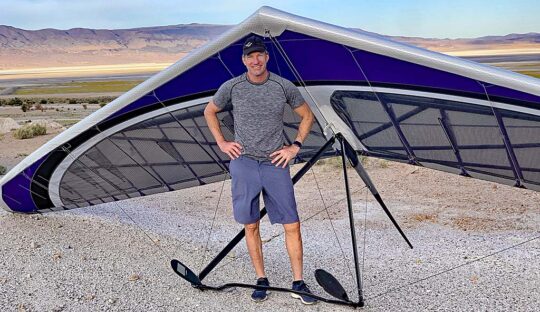
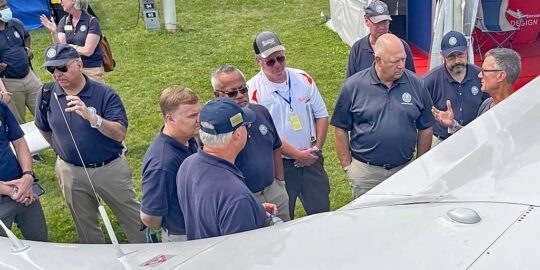
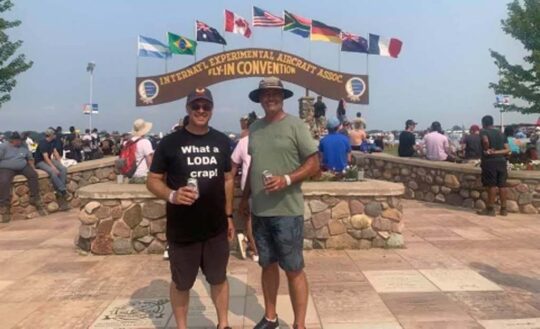
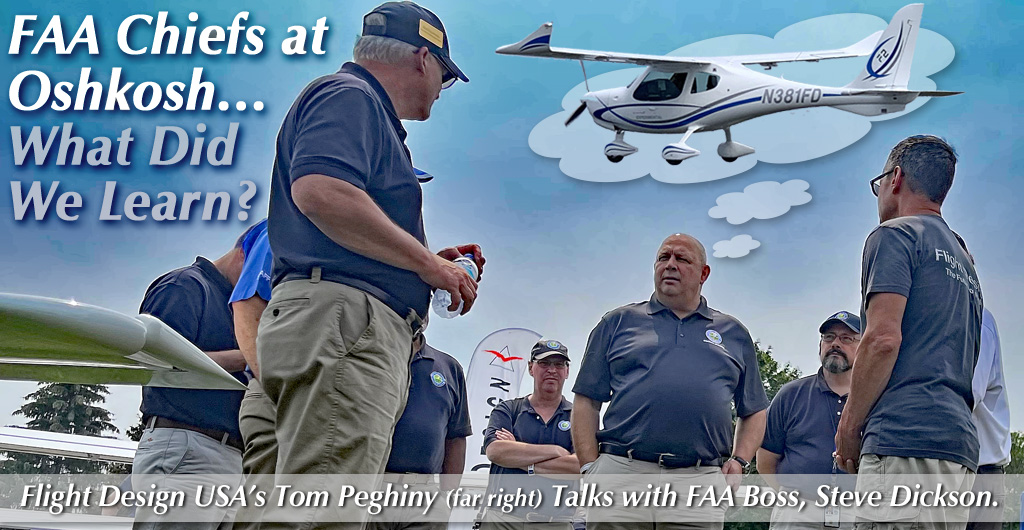
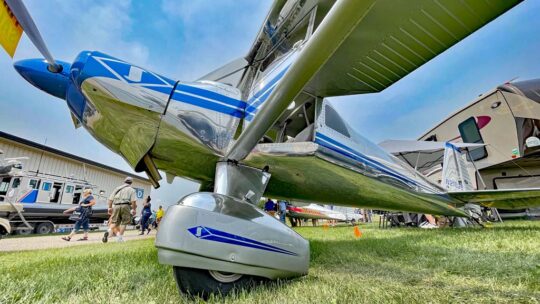 The magic of airshows and their ability to deliver in-person meetings showed their value yesterday at AirVenture Oshkosh. The following relates the story as best I could piece it together. Be advised this is not the final word on the subject. In fact, it is so fresh that changes are probable.
Our friends in EAA's Advocacy department, lead by Sean Elliot and aided by experienced staff held a special Mosaic meeting with FAA. In such a gathering at AirVenture 2021, EAA team members reportedly pushed back on Mosaic regulations, calling it "overly complex." (I was not present at this meeting, so this report is second hand.)
In the meeting, key FAA officials were present and in a remarkable development (which I am surely oversimplifying here), FAA agreed and in the space of a single meeting, listen to what occurred.
The magic of airshows and their ability to deliver in-person meetings showed their value yesterday at AirVenture Oshkosh. The following relates the story as best I could piece it together. Be advised this is not the final word on the subject. In fact, it is so fresh that changes are probable.
Our friends in EAA's Advocacy department, lead by Sean Elliot and aided by experienced staff held a special Mosaic meeting with FAA. In such a gathering at AirVenture 2021, EAA team members reportedly pushed back on Mosaic regulations, calling it "overly complex." (I was not present at this meeting, so this report is second hand.)
In the meeting, key FAA officials were present and in a remarkable development (which I am surely oversimplifying here), FAA agreed and in the space of a single meeting, listen to what occurred.
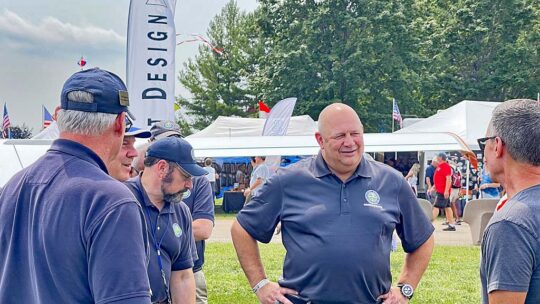
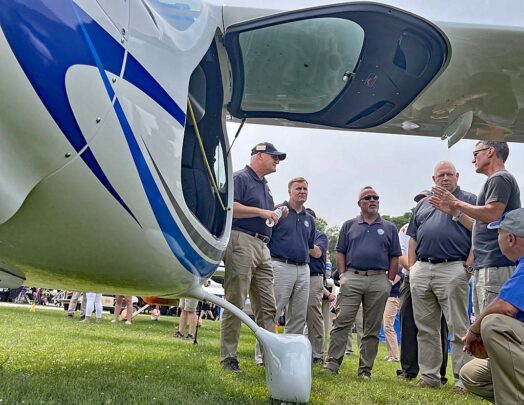
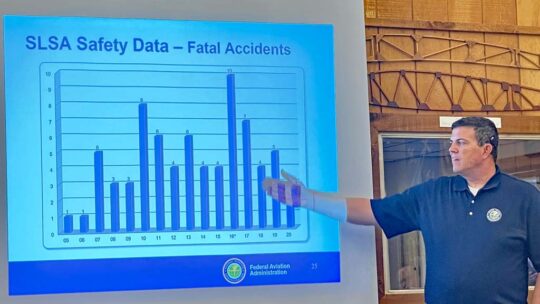
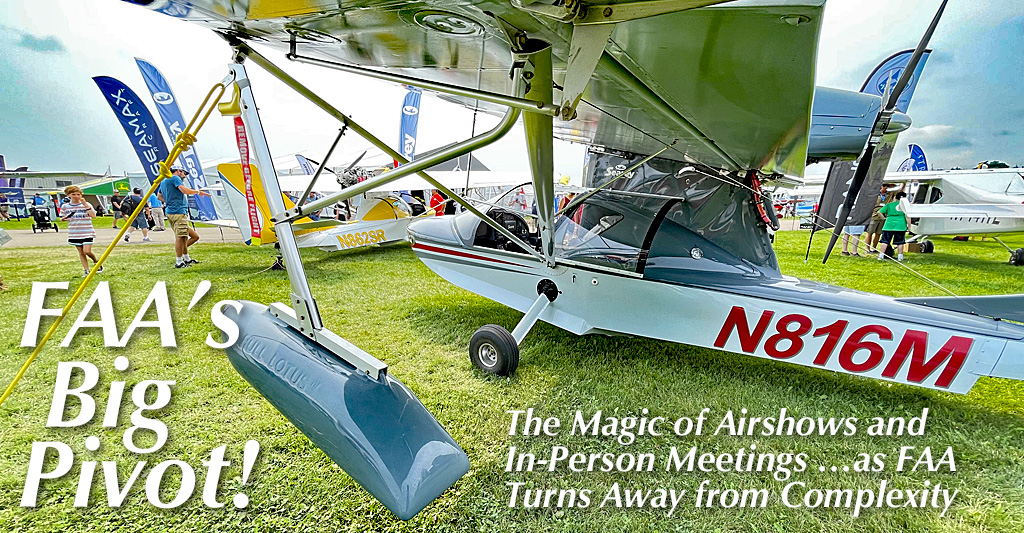
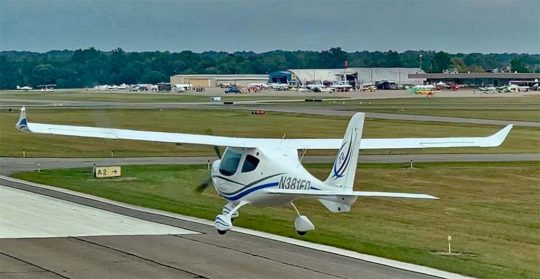
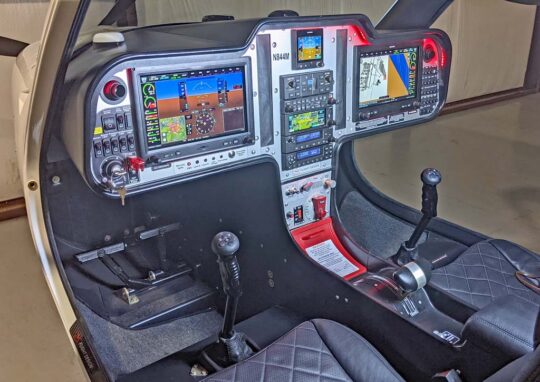
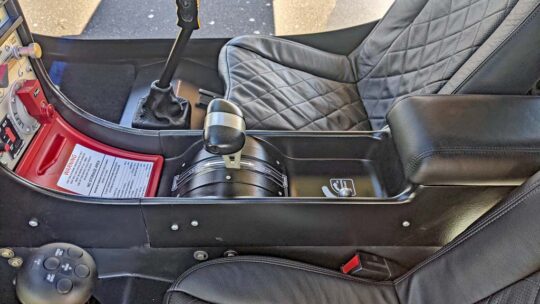
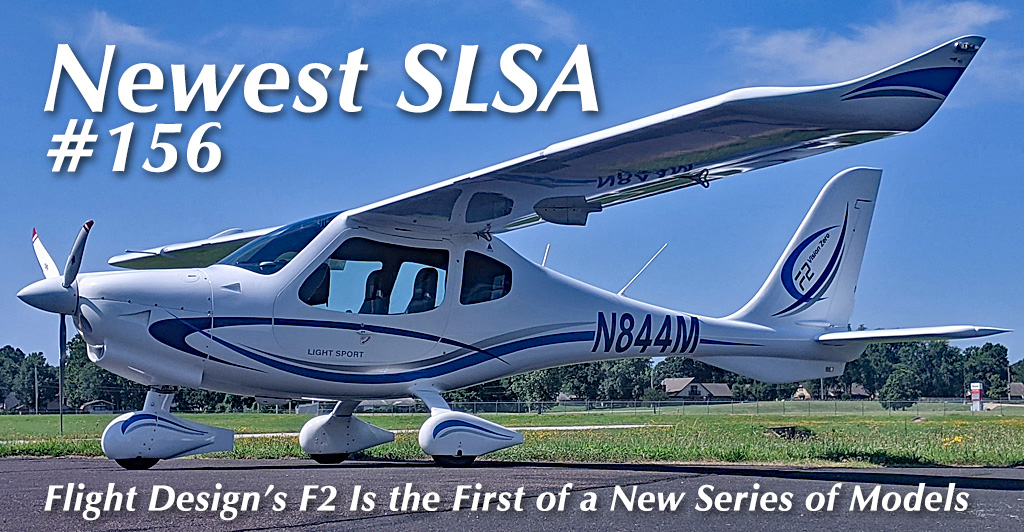
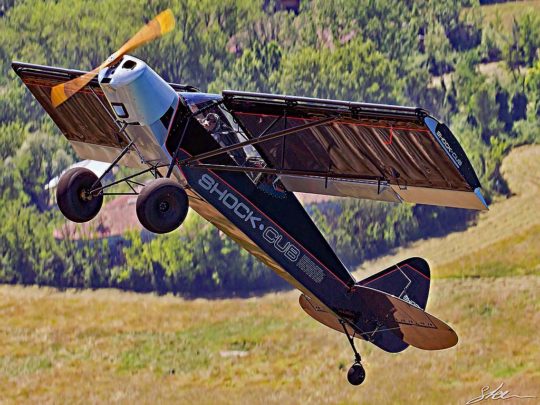 Here's the simple response: light aircraft with modern (read: powerful and efficient) engines tend to perform admirably well in high elevations, higher heat, and high humidity. If you fly almost any of these aircraft in high density conditions you already know they perform sprightly.
In contrast, I logged hundreds of Cessna 150 hours from my days as a flight instructor, and — with a similar amount of power as most LSA but also quite a few more pounds — that aircraft definitely does not perform as energetically.
So, a higher power-to-weight ratio is good, but do limits exist?
Here's the simple response: light aircraft with modern (read: powerful and efficient) engines tend to perform admirably well in high elevations, higher heat, and high humidity. If you fly almost any of these aircraft in high density conditions you already know they perform sprightly.
In contrast, I logged hundreds of Cessna 150 hours from my days as a flight instructor, and — with a similar amount of power as most LSA but also quite a few more pounds — that aircraft definitely does not perform as energetically.
So, a higher power-to-weight ratio is good, but do limits exist?
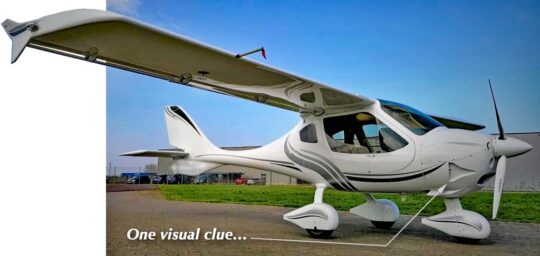
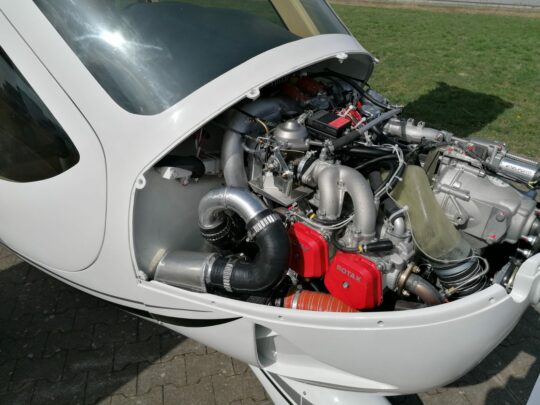 “I was very impressed with the performance of the CTLS GT with the Rotax 914 Turbo," said Flight Design test pilot Nico Stambula. "CTLS GT Turbo climbs like a rocket and easily reaches 140 knots at altitude." Stambula added that the 914 intercooled engine maintains consistent temperatures. In addition, this is a very smooth flying package."
The first CTLS GT will be shipped to an owner in South Africa, which has both high temperatures and high elevations. Flight Design believes the new model "should be just great for operating in those more challenging conditions."
With the addition of the Rotax 914T option, the long-running CTLS extends its range again. Various models are available as a European 600 kilogram (European) Ultralight, an ASTM-compliant Special LSA, or as an EASA-certified aircraft. Models are available with the Rotax 912, the 912iS and now as a turbocharged performer as the CTLS GT 914T.
“I was very impressed with the performance of the CTLS GT with the Rotax 914 Turbo," said Flight Design test pilot Nico Stambula. "CTLS GT Turbo climbs like a rocket and easily reaches 140 knots at altitude." Stambula added that the 914 intercooled engine maintains consistent temperatures. In addition, this is a very smooth flying package."
The first CTLS GT will be shipped to an owner in South Africa, which has both high temperatures and high elevations. Flight Design believes the new model "should be just great for operating in those more challenging conditions."
With the addition of the Rotax 914T option, the long-running CTLS extends its range again. Various models are available as a European 600 kilogram (European) Ultralight, an ASTM-compliant Special LSA, or as an EASA-certified aircraft. Models are available with the Rotax 912, the 912iS and now as a turbocharged performer as the CTLS GT 914T.
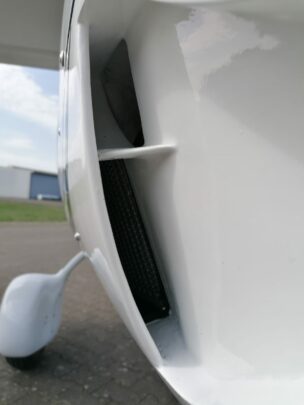 Someone was bound to ask why engineers didn't use the newest 141-horsepower Rotax 915 iS, so I queried the company on this question.
Since the start of Light-Sport Aircraft, Flight Design has been represented in America by Tom Peghiny, proprietor of
Someone was bound to ask why engineers didn't use the newest 141-horsepower Rotax 915 iS, so I queried the company on this question.
Since the start of Light-Sport Aircraft, Flight Design has been represented in America by Tom Peghiny, proprietor of 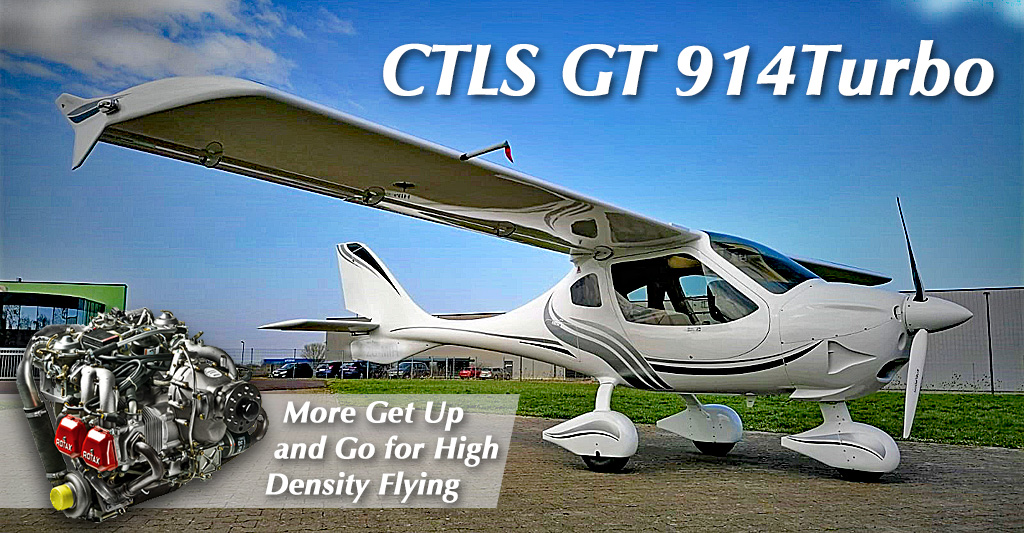
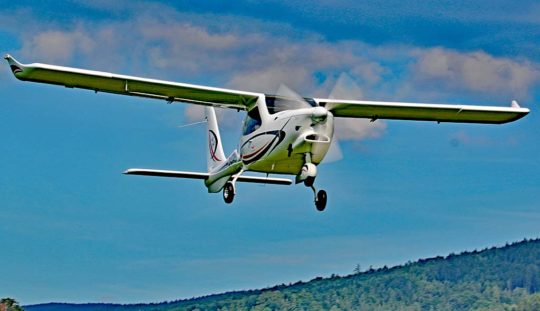 Then came the sophisticated CTLS, wholly redone for the American market. It enlarged the cabin and lengthened the fuselage becoming more deluxe throughout.
Now, we come to F2 in what I'm calling the third generation of the iconic shape that still leads the LSA market after almost 17 years. The one and only example presently in America is currently based at
Then came the sophisticated CTLS, wholly redone for the American market. It enlarged the cabin and lengthened the fuselage becoming more deluxe throughout.
Now, we come to F2 in what I'm calling the third generation of the iconic shape that still leads the LSA market after almost 17 years. The one and only example presently in America is currently based at 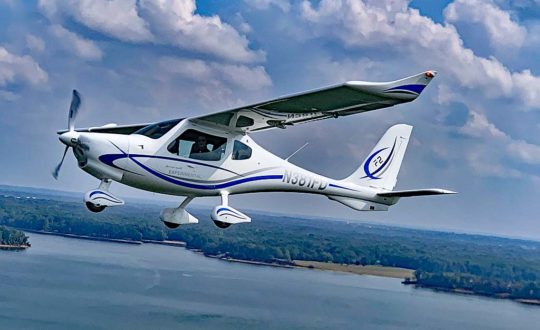 Nearly every airshow was cancelled for 2020 amidst the global economic carnage driven by lockdowns and travel restrictions to contain Covid.
Well, every show was scrubbed except the Midwest LSA Expo in Mt. Vernon, Illinois. Because that one and only event happened — with no negatives regarding the virus, so far as I know — I got to see and fly Flight Design's latest and greatest, the F2. Not only was the airshow a welcome change from the social barriers everyone had faced over the last few months, but Midwest 2020 provided a venue to see and fly the new model.
"CTSW was a Porsche. CTLS was a Corvette. F2 is a Cadillac," said Tom Gutmann, Jr., the younger half of the father and son
Nearly every airshow was cancelled for 2020 amidst the global economic carnage driven by lockdowns and travel restrictions to contain Covid.
Well, every show was scrubbed except the Midwest LSA Expo in Mt. Vernon, Illinois. Because that one and only event happened — with no negatives regarding the virus, so far as I know — I got to see and fly Flight Design's latest and greatest, the F2. Not only was the airshow a welcome change from the social barriers everyone had faced over the last few months, but Midwest 2020 provided a venue to see and fly the new model.
"CTSW was a Porsche. CTLS was a Corvette. F2 is a Cadillac," said Tom Gutmann, Jr., the younger half of the father and son 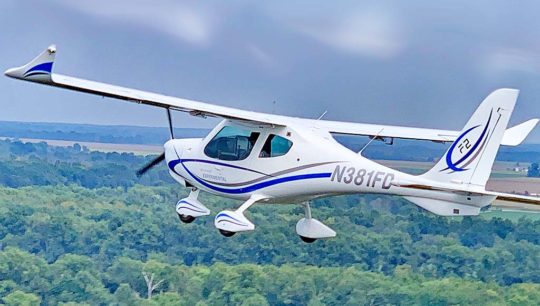 Tom explained that F2 may look similar to CT but is a nose-to-tail, tip-to-tip refreshed design. It has been some time in development because as Tom noted, "Flight Design engineers had to rework the whole airplane. It is significantly larger than CTLS yet final production models should weigh no more." That's some accomplishment!
It is also built quite differently. All CTLS are essentially "hand made" with hand-layup molds that display the skill of factory workers yet makes each one unique. For F2, Tom said, Flight Design uses molds created on 5-axis CNC shaping tools so each one is fabricated to precise specifications. You may not be able to see the difference in construction but the new method is far better for serial production.
Tom explained that F2 may look similar to CT but is a nose-to-tail, tip-to-tip refreshed design. It has been some time in development because as Tom noted, "Flight Design engineers had to rework the whole airplane. It is significantly larger than CTLS yet final production models should weigh no more." That's some accomplishment!
It is also built quite differently. All CTLS are essentially "hand made" with hand-layup molds that display the skill of factory workers yet makes each one unique. For F2, Tom said, Flight Design uses molds created on 5-axis CNC shaping tools so each one is fabricated to precise specifications. You may not be able to see the difference in construction but the new method is far better for serial production.
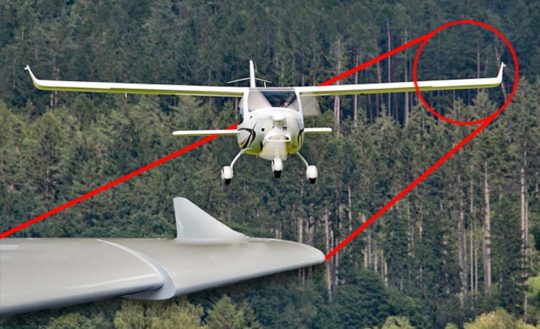 "F2 is manufactured to close tolerances in pre-impregnated carbon fiber for great structural strength and light weight," said Flight Design in Germany. With prepreg carbon fiber from American company Hexcel, F2's honeycomb-core fuselage signifies a big step forward.
Likewise, F2's new wing is a major redesign; the outboard sections feature aerodynamic cuffs (nearby photo).
F2’s tail is all-new as well. CTLS's full-flying stabilator is replaced with a wider stabilizer that has a discrete two-piece elevator with a center section that remains stationary forming what's often called a duck tail. This aids in meeting the ASTM handling requirement. One result is that the airplane does not pitch up during a departure stall.
"F2 is manufactured to close tolerances in pre-impregnated carbon fiber for great structural strength and light weight," said Flight Design in Germany. With prepreg carbon fiber from American company Hexcel, F2's honeycomb-core fuselage signifies a big step forward.
Likewise, F2's new wing is a major redesign; the outboard sections feature aerodynamic cuffs (nearby photo).
F2’s tail is all-new as well. CTLS's full-flying stabilator is replaced with a wider stabilizer that has a discrete two-piece elevator with a center section that remains stationary forming what's often called a duck tail. This aids in meeting the ASTM handling requirement. One result is that the airplane does not pitch up during a departure stall.
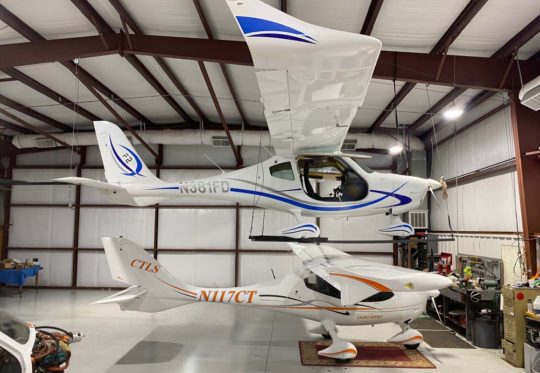 The altered horizontal tail works cooperatively with the wing cuffs to make a highly stall-resistant airframe, a feature FAA admires so much they gave Icon Aircraft
The altered horizontal tail works cooperatively with the wing cuffs to make a highly stall-resistant airframe, a feature FAA admires so much they gave Icon Aircraft 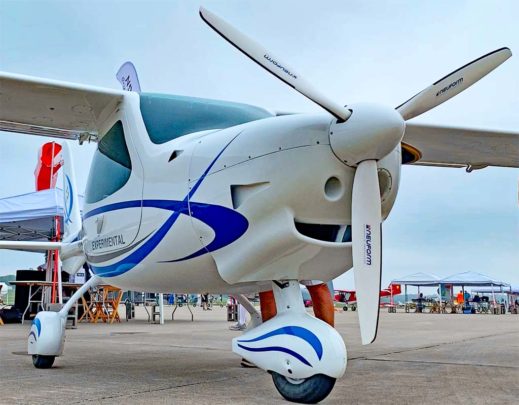
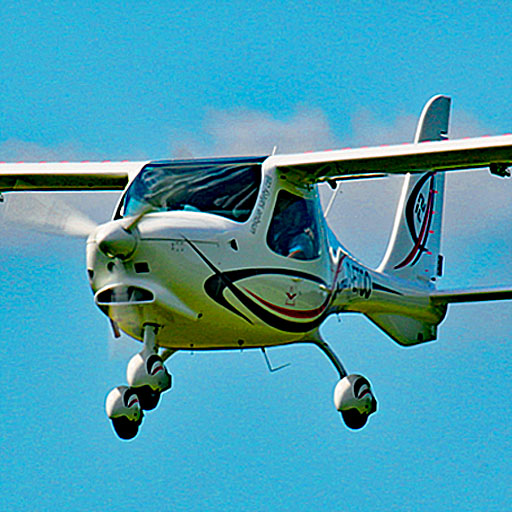 Cruise speed at a low altitude (approximately 3,000 feet density altitude) exceeded 115 knots while burning barely over 4 gallons an hour; Rotax's 912iS is known for its fuel miserliness. This allows a topped-off F2 to fly close to 1,000 statute miles. You can fly cross country to a destination and return to base without buying fuel. I once enjoyed this quality while
Cruise speed at a low altitude (approximately 3,000 feet density altitude) exceeded 115 knots while burning barely over 4 gallons an hour; Rotax's 912iS is known for its fuel miserliness. This allows a topped-off F2 to fly close to 1,000 statute miles. You can fly cross country to a destination and return to base without buying fuel. I once enjoyed this quality while 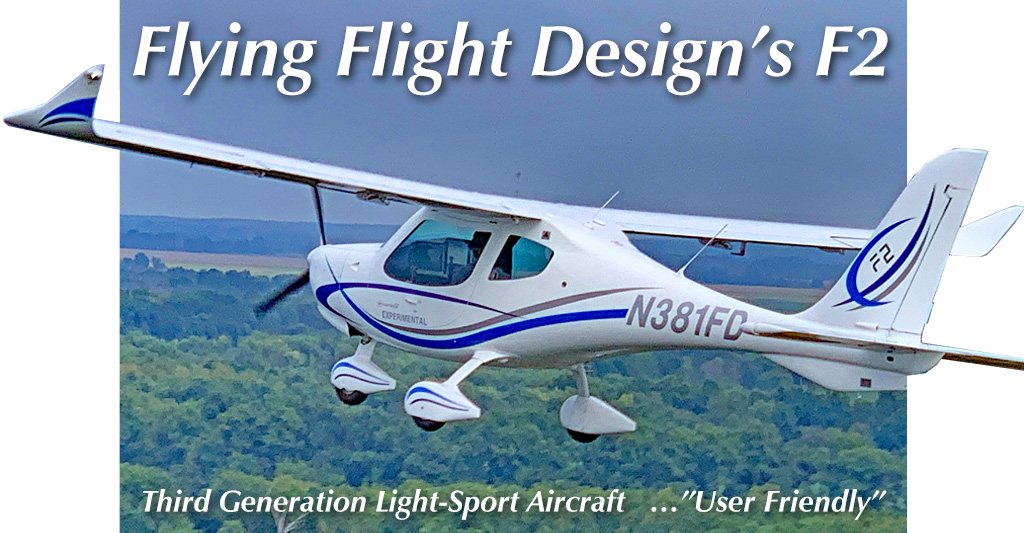
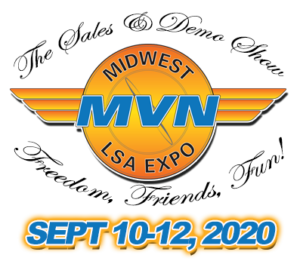 I hope you can attend 2020's
I hope you can attend 2020's 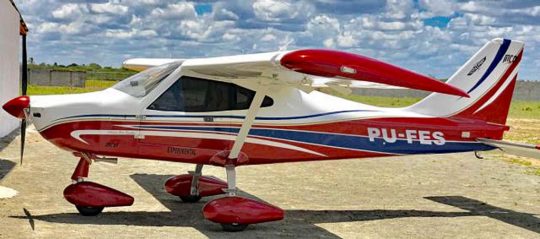 MC-01 by Montaer
MC-01 by Montaer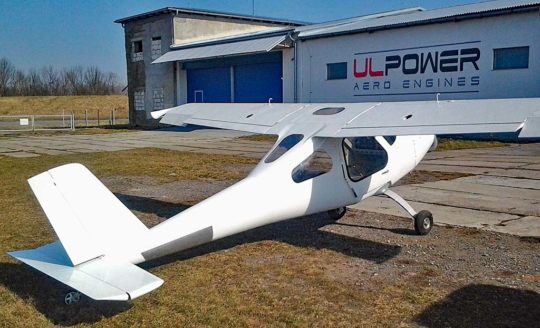
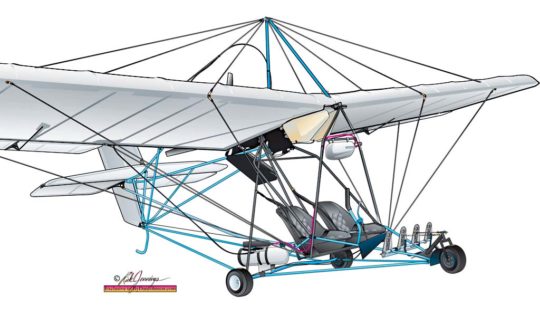 SmithSilver by Tri-State Kite
SmithSilver by Tri-State Kite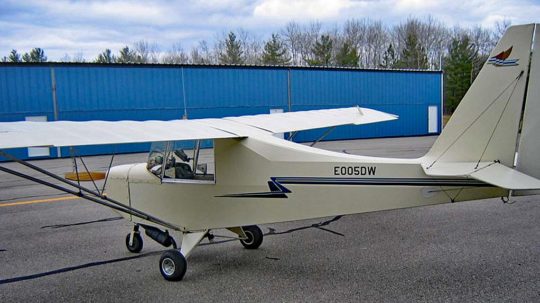 Sparrow by Carlson
Sparrow by Carlson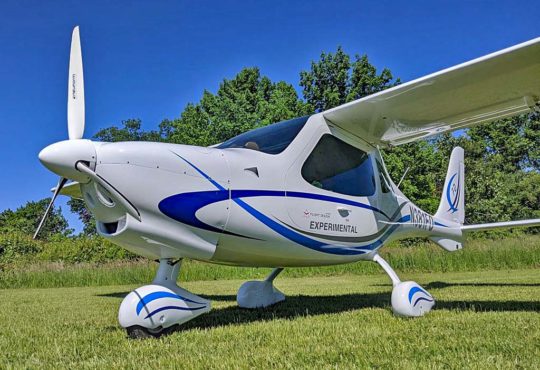 F2 by Flight Design
F2 by Flight Design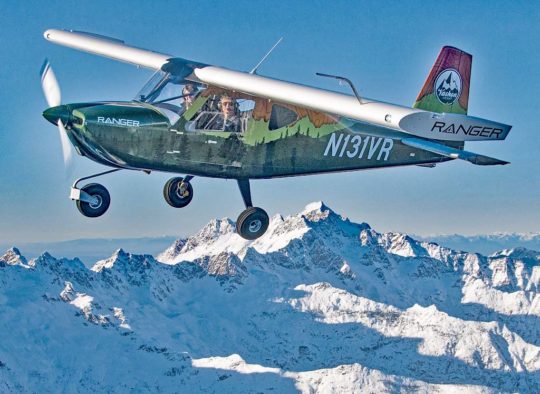 Vashon Ranger
Vashon Ranger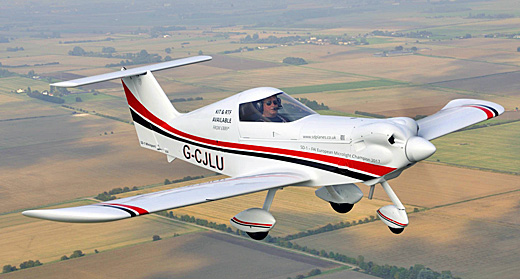
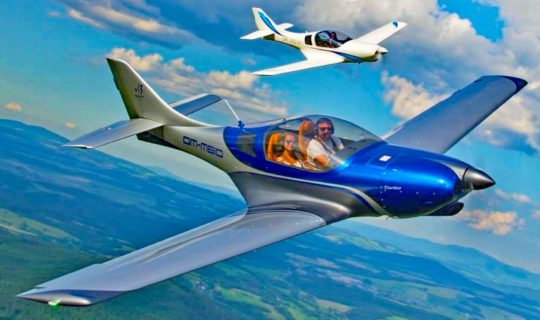 VL3 by JMB Aircraft
VL3 by JMB Aircraft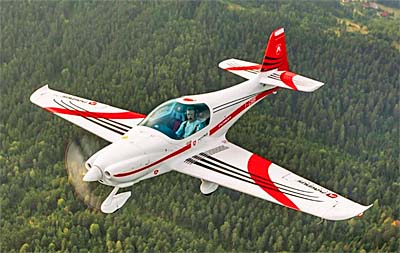 Fusion 212 by Magnus
Fusion 212 by Magnus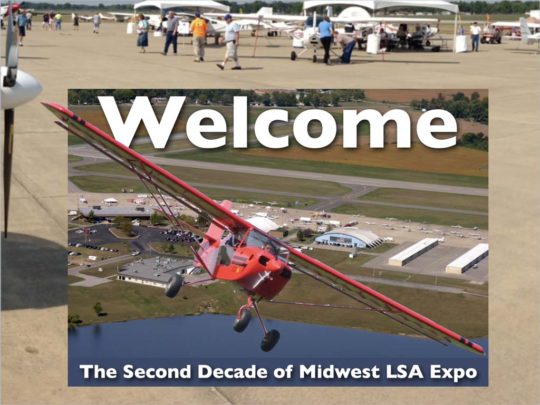 Rob Rollison the proprietor of the very successful
Rob Rollison the proprietor of the very successful 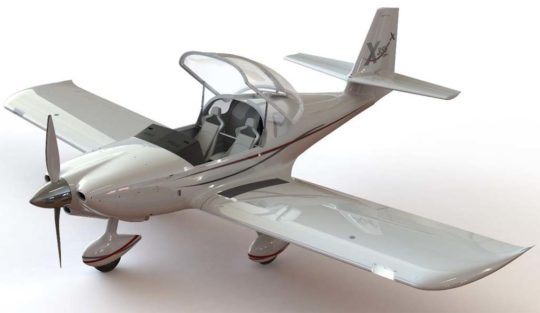 Deon will have the InnovAviation FX1 we saw at Midwest 2019 (
Deon will have the InnovAviation FX1 we saw at Midwest 2019 (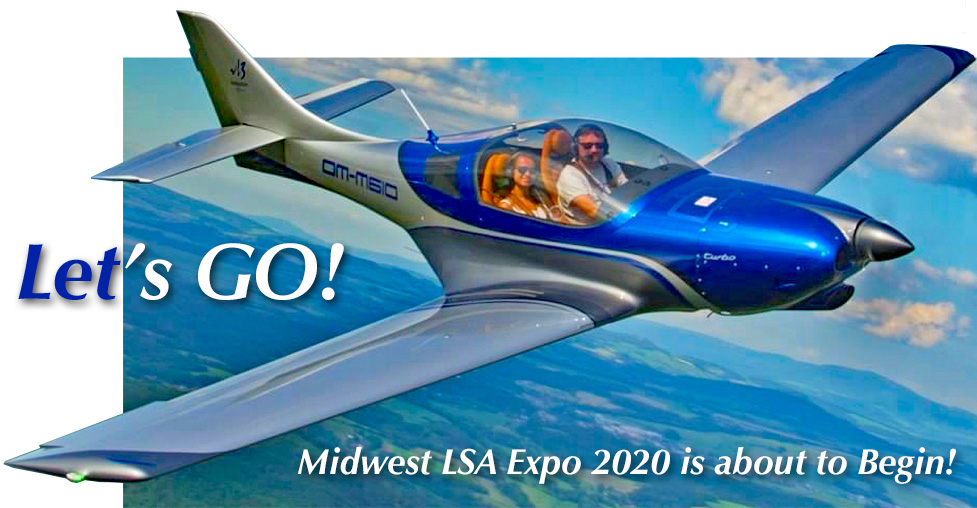
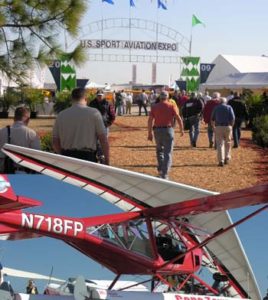 Although a mirror reflection of the greater global economy, many pilots are stunned that airshow after airshow has fallen to the virus. It seems like two or three years ago when, back in February 2020, Videoman Dave and I covered the
Although a mirror reflection of the greater global economy, many pilots are stunned that airshow after airshow has fallen to the virus. It seems like two or three years ago when, back in February 2020, Videoman Dave and I covered the 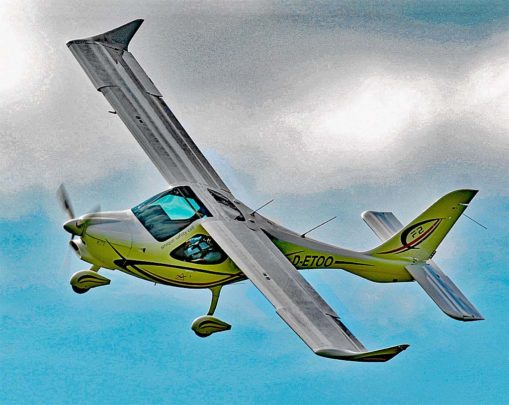 Tom has run
Tom has run 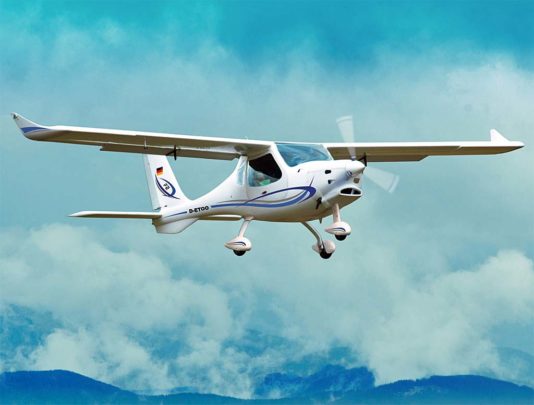 "I'm very impressed with F2. It feels like a bigger airplane, very solid in the air. More stable than I expected. Very easy to land." He's comparing to the CTLS that so many other pilots know.
"F2 feels more stable in the air compared to our CTLS, which offers a sportier feel." Pressing him for details, Tom recounted the following story from a recent flight. It involved F2's autopilot.
"As you know, with the
"I'm very impressed with F2. It feels like a bigger airplane, very solid in the air. More stable than I expected. Very easy to land." He's comparing to the CTLS that so many other pilots know.
"F2 feels more stable in the air compared to our CTLS, which offers a sportier feel." Pressing him for details, Tom recounted the following story from a recent flight. It involved F2's autopilot.
"As you know, with the 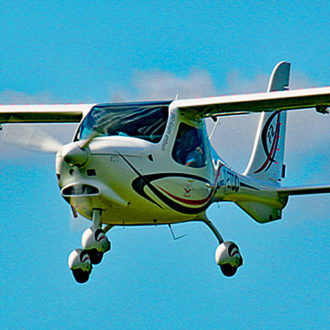 In one of the nearby photos taken from the nose of F2, the vertical surface of the tailplane appears enormous, one to rival the very tall tail on an
In one of the nearby photos taken from the nose of F2, the vertical surface of the tailplane appears enormous, one to rival the very tall tail on an 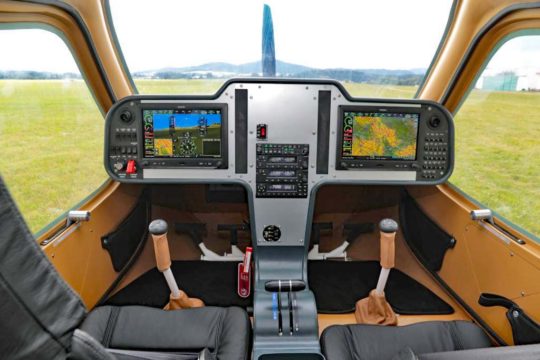
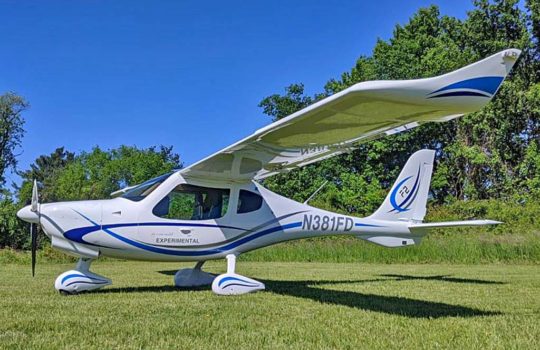
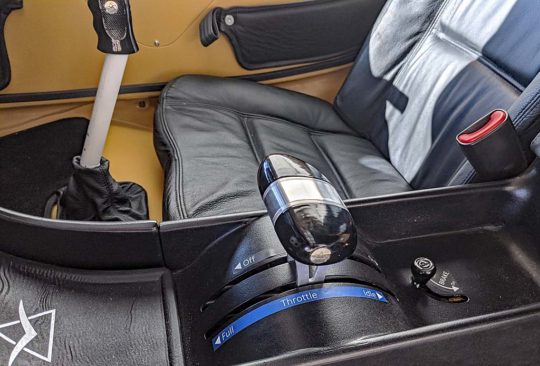
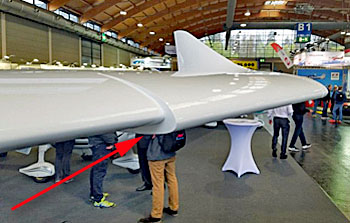 As we discussed the two planes, Tom said he thought I could do the same maneuvers with F2 that I'd done with the Icon A5 and I'd get a similar sensation.
"Departure stalls simply don't," Tom described. "With full flaps, it will 'nod' a bit, a kind of pre-stall but with neutral flaps the stick remains effective at all times."
Tom worked closely with Flight Design during development of F2, playing key roles. He closed saying, "I knew we could achieve those characteristics but I didn't know how well it would fly."
I could almost see his smile over the phone.
I look forward to experience F2, perhaps at the
As we discussed the two planes, Tom said he thought I could do the same maneuvers with F2 that I'd done with the Icon A5 and I'd get a similar sensation.
"Departure stalls simply don't," Tom described. "With full flaps, it will 'nod' a bit, a kind of pre-stall but with neutral flaps the stick remains effective at all times."
Tom worked closely with Flight Design during development of F2, playing key roles. He closed saying, "I knew we could achieve those characteristics but I didn't know how well it would fly."
I could almost see his smile over the phone.
I look forward to experience F2, perhaps at the 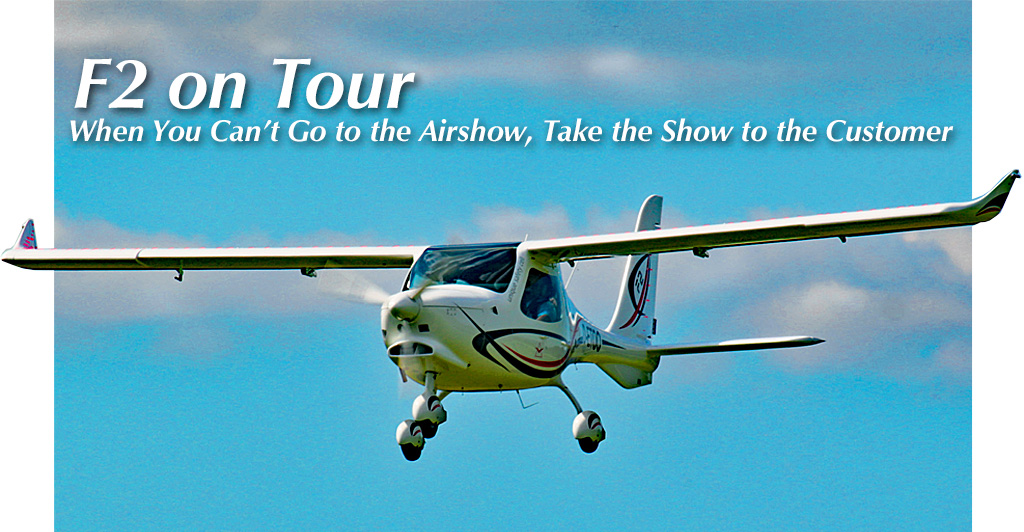
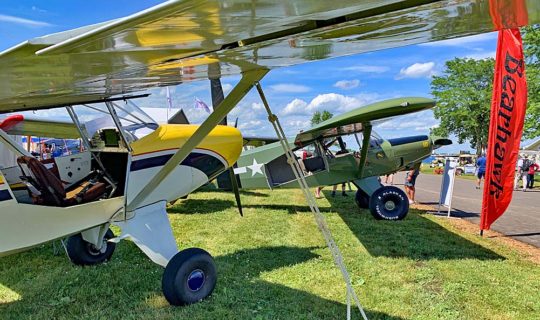 I interrupt the ongoing battle with Covid-19 to take you on a nostalgic tour of Oshkosh-19. View this excursion by video below.
Hey, when you can't go to
I interrupt the ongoing battle with Covid-19 to take you on a nostalgic tour of Oshkosh-19. View this excursion by video below.
Hey, when you can't go to 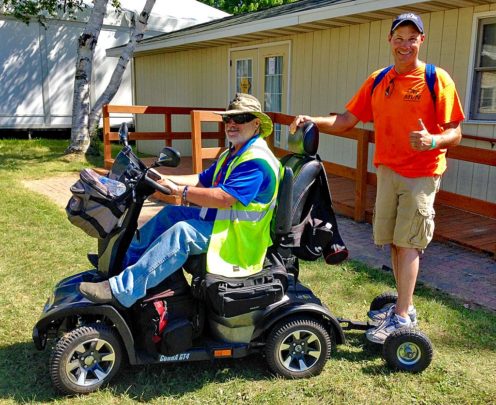 Oshkosh is so sprawling you can't see it all but this post along with the video below tries to capture objects of interest to readers of this website and viewers of Dave's
Oshkosh is so sprawling you can't see it all but this post along with the video below tries to capture objects of interest to readers of this website and viewers of Dave's 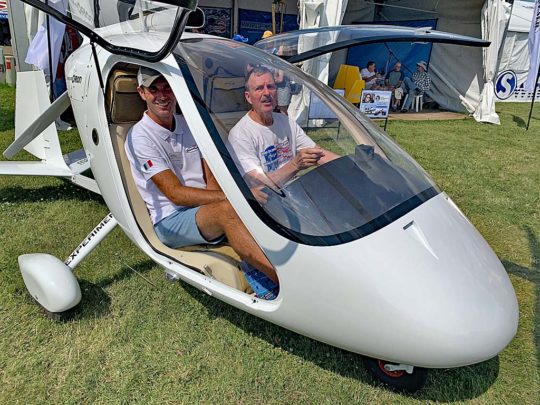
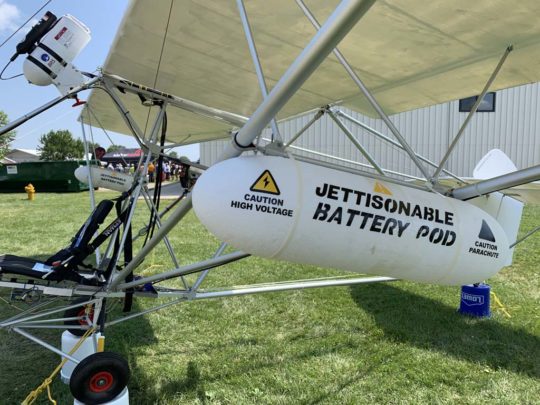
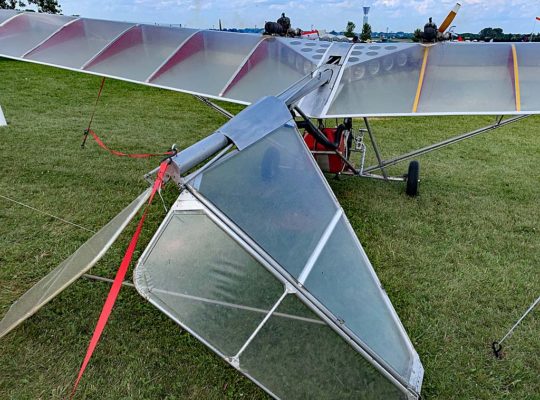
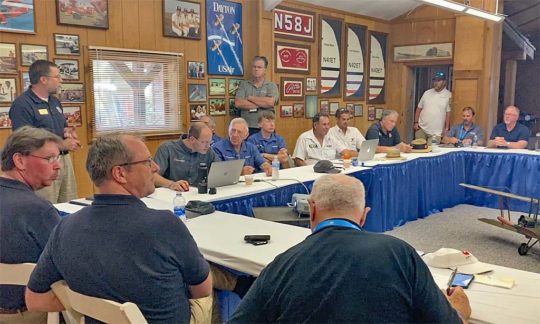
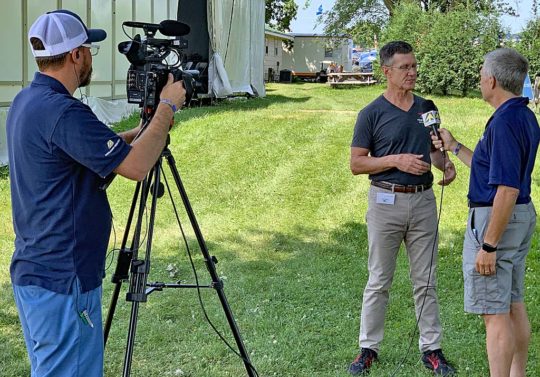
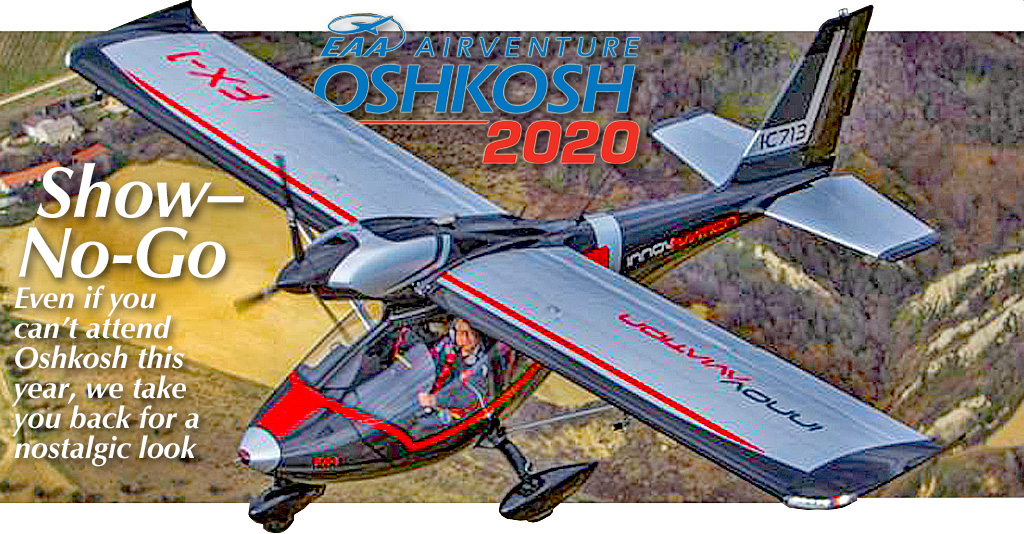
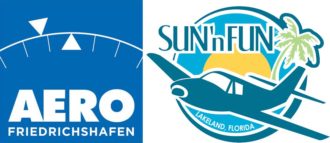 Of course, I refer to
Of course, I refer to 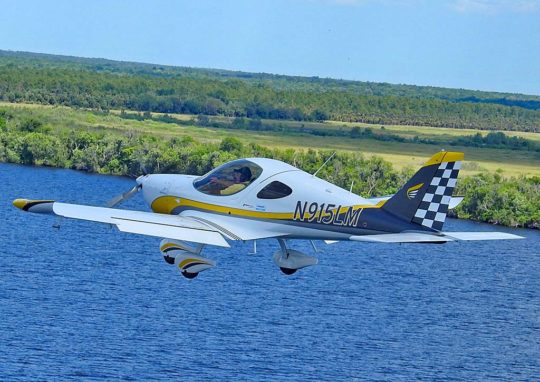 Bristell with
Bristell with 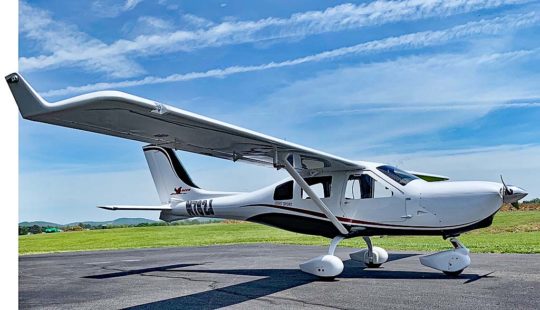 Representative U.S. Sport Planes, led by industry veteran Scott Severen, has demonstrated this baggage capacity with photos showing a
Representative U.S. Sport Planes, led by industry veteran Scott Severen, has demonstrated this baggage capacity with photos showing a 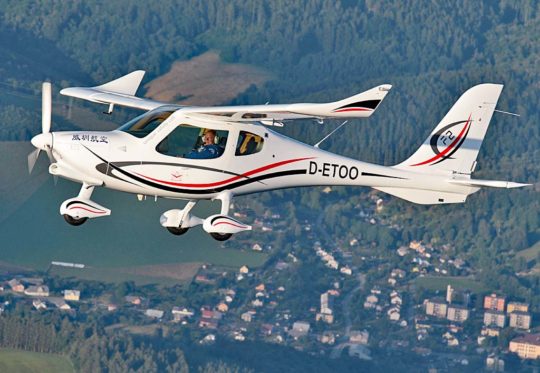 Since I first saw the F2 in mock up, Flight Design has redesigned the intake for two reasons: "to reduce drag as we confirmed the older version was very functional but draggy; and for aesthetic reasons," said the company. "Flight Design team designer and Head of Airworthiness, Christian Majunke, designed conceptually. He also designed a rather novel installation of the coolant and oil radiators," elaborated Flight Design USA representative, Tom Peghiny.
Also new panel is an SLSA panel with twin G3X screens, a Garmin GTR 225 Com, Garmin GTX 345 ADSB in and out transponder, Garmin GMC 507 autopilot control head (with dual axis autopilot), and Garmin GMA 245 intercom.
Pilot controls remain essentially as they were on the CT-series but note the combined single lever throttle and brake system.
"Our F2 prototype number 002 arrived at port in Miami in preparation for display at Sun n Fun 2020," said Tom. Like most vendors, Flight Design USA hoped to go forward with the Lakeland show but will now unveil the new model at Oshkosh 2020 (assuming it remains on schedule).
"After completing all SLSA required flight testing including the demanding ASTM 3180 anti-spin requirements, production has started on the first aircraft from production tooling in Germany, Ukraine and the Czech Republic," concluded Tom.
Since I first saw the F2 in mock up, Flight Design has redesigned the intake for two reasons: "to reduce drag as we confirmed the older version was very functional but draggy; and for aesthetic reasons," said the company. "Flight Design team designer and Head of Airworthiness, Christian Majunke, designed conceptually. He also designed a rather novel installation of the coolant and oil radiators," elaborated Flight Design USA representative, Tom Peghiny.
Also new panel is an SLSA panel with twin G3X screens, a Garmin GTR 225 Com, Garmin GTX 345 ADSB in and out transponder, Garmin GMC 507 autopilot control head (with dual axis autopilot), and Garmin GMA 245 intercom.
Pilot controls remain essentially as they were on the CT-series but note the combined single lever throttle and brake system.
"Our F2 prototype number 002 arrived at port in Miami in preparation for display at Sun n Fun 2020," said Tom. Like most vendors, Flight Design USA hoped to go forward with the Lakeland show but will now unveil the new model at Oshkosh 2020 (assuming it remains on schedule).
"After completing all SLSA required flight testing including the demanding ASTM 3180 anti-spin requirements, production has started on the first aircraft from production tooling in Germany, Ukraine and the Czech Republic," concluded Tom.
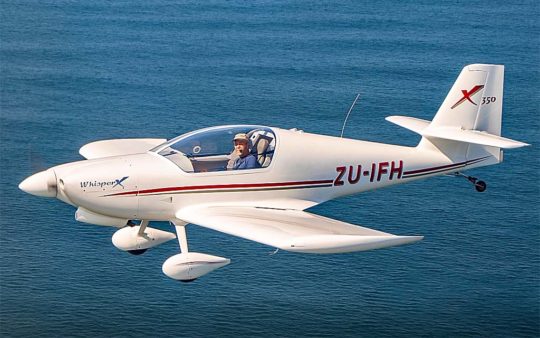 At Sun 'n Fun 2020, Deon expected to introduce Whisper to American kit builders. Alas, as with the rest of this group, you probably won't see it until July in Wisconsin.
At Sun 'n Fun 2020, Deon expected to introduce Whisper to American kit builders. Alas, as with the rest of this group, you probably won't see it until July in Wisconsin.
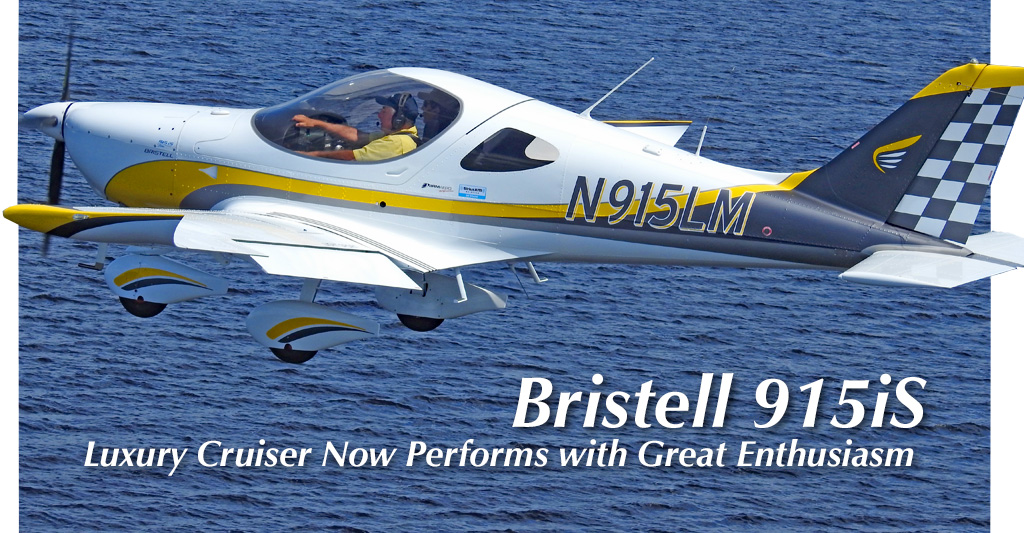
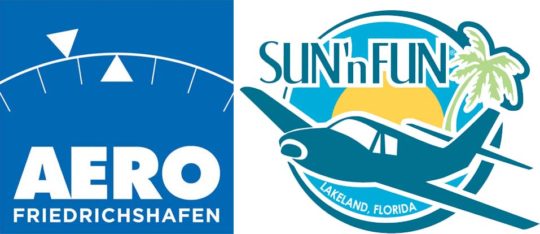 Meanwhile, I have been producing more content here on ByDanJohnson.com so everyone sheltering-in-place can at least fantasy fly their favorite flying machine. I will also continue with the "Virtual
Meanwhile, I have been producing more content here on ByDanJohnson.com so everyone sheltering-in-place can at least fantasy fly their favorite flying machine. I will also continue with the "Virtual 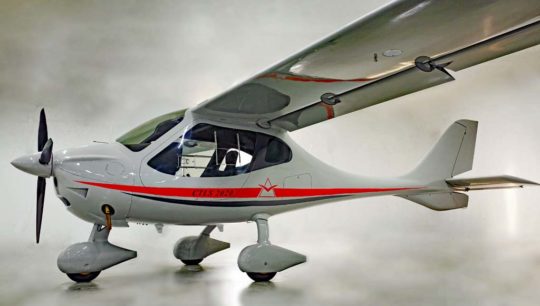 Changes for 2020 include a reshaped and longer cowling, Blackline propeller with new spinner, fully integrated landing light, and an additional NACA inlet to improve cooling. Other aerodynamic improvements include new landing gear legs with internal brake lines and new low drag wheel fairings. This all leads to significantly reduced drag and an increase in maximum speed. The company reports, "[These] aerodynamic modifications have made the CTLS 2020 nearly 10 knots faster!"
Changes for 2020 include a reshaped and longer cowling, Blackline propeller with new spinner, fully integrated landing light, and an additional NACA inlet to improve cooling. Other aerodynamic improvements include new landing gear legs with internal brake lines and new low drag wheel fairings. This all leads to significantly reduced drag and an increase in maximum speed. The company reports, "[These] aerodynamic modifications have made the CTLS 2020 nearly 10 knots faster!"
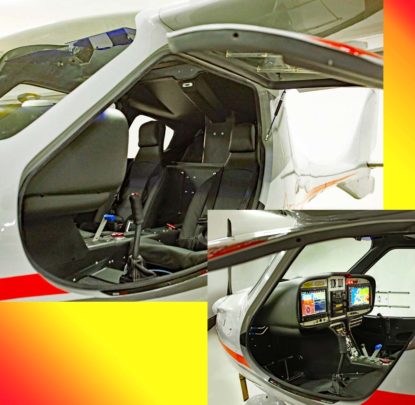 A new
A new  "Our F2 Light-Sport Aircraft model is fully ASTM-compliant after fine tuning," noted the company. "Our first airplanes will be delivered to customers in June 2020. Careful engineering allowed us to bring this complex airplane under the maximum allowed take-off weight (of 1,320 pounds or 600 kilograms)."
For European consumption, Flight Design is pursuing CS-23 approval (similar to FAA's Part 23) for their two seat F2, however, this model will be able to fly at 650 kilograms (1,430 pounds) of maximum takeoff weight when it is granted a CS-23 certificate. "We think this will be ideal for modern flight schools and private pilots," the company stated.
Construction of Flight Design's newest uses a new composite supplier, Hexcel.
"Our F2 Light-Sport Aircraft model is fully ASTM-compliant after fine tuning," noted the company. "Our first airplanes will be delivered to customers in June 2020. Careful engineering allowed us to bring this complex airplane under the maximum allowed take-off weight (of 1,320 pounds or 600 kilograms)."
For European consumption, Flight Design is pursuing CS-23 approval (similar to FAA's Part 23) for their two seat F2, however, this model will be able to fly at 650 kilograms (1,430 pounds) of maximum takeoff weight when it is granted a CS-23 certificate. "We think this will be ideal for modern flight schools and private pilots," the company stated.
Construction of Flight Design's newest uses a new composite supplier, Hexcel.
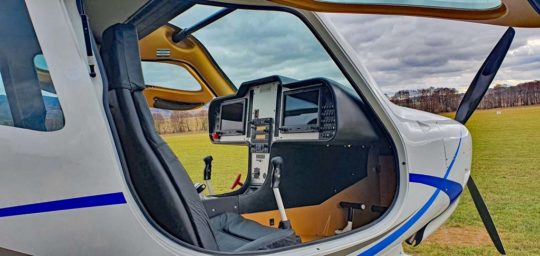 Late in 2017, a Flight Design review concluded that prepregs could deliver a more consistent final product by ensuring constant material quality and processing parameters and could produce a lighter and stronger aircraft at a more competitive overall cost. The low-temperature cure could be done outside an autoclave. The latter reduces tooling costs and can boost build rates. Following careful analysis, the company went with Hexcel. Prepreg materials — "pre-impregnated" composite fibers have an epoxy material already present — were first used for the F2 prototype.
Late in 2017, a Flight Design review concluded that prepregs could deliver a more consistent final product by ensuring constant material quality and processing parameters and could produce a lighter and stronger aircraft at a more competitive overall cost. The low-temperature cure could be done outside an autoclave. The latter reduces tooling costs and can boost build rates. Following careful analysis, the company went with Hexcel. Prepreg materials — "pre-impregnated" composite fibers have an epoxy material already present — were first used for the F2 prototype.
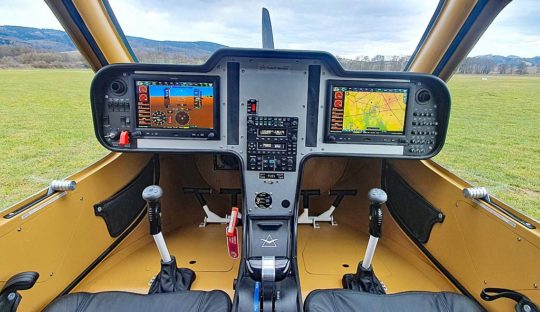 Flight Design began to review the market for available material options with a key part of its strategy to find and qualify a prepreg system that is not traditionally used in higher cost autoclave production for aerospace applications.
Flight Design began to review the market for available material options with a key part of its strategy to find and qualify a prepreg system that is not traditionally used in higher cost autoclave production for aerospace applications.
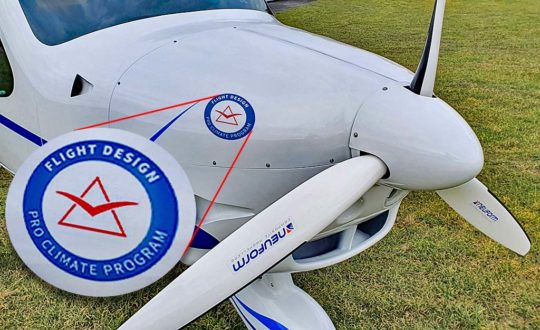 Already in operation since March 1st, Flight Design will "offset" the carbon emissions from the fuel burned by their airplanes during the first 2,000 hours of operation. They'll do this by employing the
Already in operation since March 1st, Flight Design will "offset" the carbon emissions from the fuel burned by their airplanes during the first 2,000 hours of operation. They'll do this by employing the 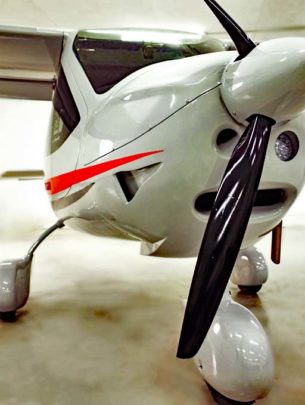 Offsets will come from cash contributions by Flight Design to programs that meet internationally-accepted standards. Funds will be deployed to planting more trees and other actions that consume CO2.
Offsets will come from cash contributions by Flight Design to programs that meet internationally-accepted standards. Funds will be deployed to planting more trees and other actions that consume CO2.
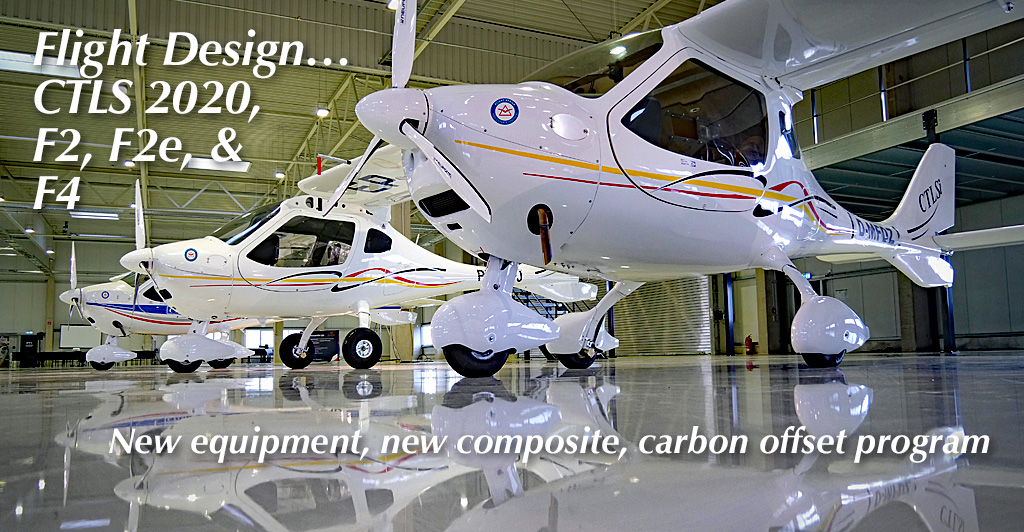
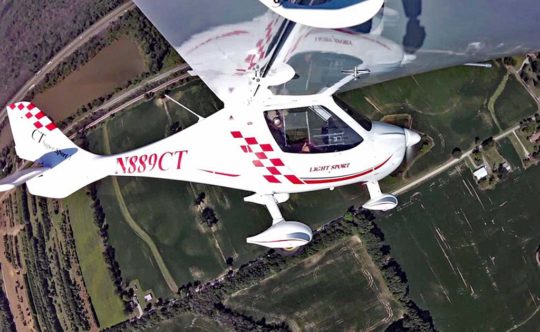 How does one LSA brand rise and stay above others?
How does one LSA brand rise and stay above others?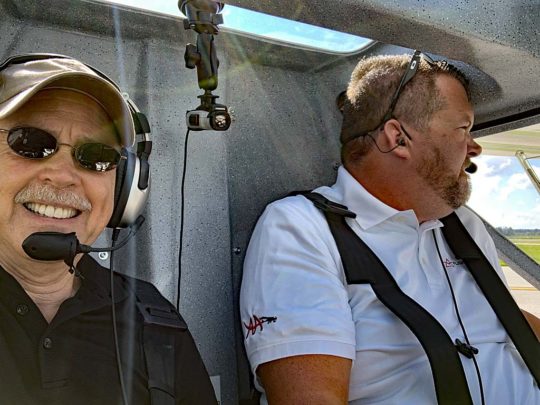 My tongue-in-cheek subtitle comes from the perspective of an average-sized pilot talking to the father and son team of Tom Sr. and Tom Jr. Gutmann. These gentle giants stand so tall above me that even Tom Cruise's acting box would not let me look this pair eye-to-eye.
Indeed, it is a tribute to the spaciousness of CT-series interiors that both these beefy fellows fit inside comfortably. Don't try that in a Cessna 150 (or even a 172)!
Flight Design's CT-series is roomy inside, 49 inches wide, a full 10 inches more than a Cessna 172. It also has super visibility. These facts are true of both CTLS, the current flagship of the German producer, and for the newest CT Super Sport, as seen in most of the nearby photos. The image of the two of us in the cockpit clearly shows that Tom Jr. and I have several inches between our shoulders and we were not smashed up against the door to produce this view.
My tongue-in-cheek subtitle comes from the perspective of an average-sized pilot talking to the father and son team of Tom Sr. and Tom Jr. Gutmann. These gentle giants stand so tall above me that even Tom Cruise's acting box would not let me look this pair eye-to-eye.
Indeed, it is a tribute to the spaciousness of CT-series interiors that both these beefy fellows fit inside comfortably. Don't try that in a Cessna 150 (or even a 172)!
Flight Design's CT-series is roomy inside, 49 inches wide, a full 10 inches more than a Cessna 172. It also has super visibility. These facts are true of both CTLS, the current flagship of the German producer, and for the newest CT Super Sport, as seen in most of the nearby photos. The image of the two of us in the cockpit clearly shows that Tom Jr. and I have several inches between our shoulders and we were not smashed up against the door to produce this view.
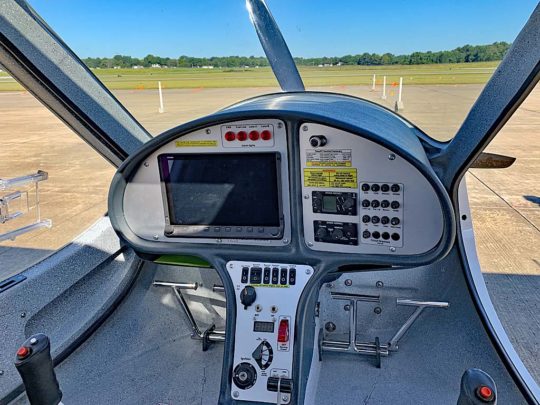 Tom and I flew Super Sport at the
Tom and I flew Super Sport at the 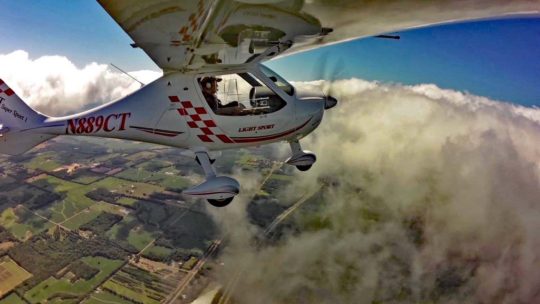 What you don't get with CT Super Sport is the back window and hat rack cabin space of CTLS. The slight enlargement of the longer, fancier LS does indeed make the cabin feel roomier and you have less space for things you need in the cockpit — though the floor compartments in front of both seats will suffice for most things you may want to access during flight. Both models keep the ample storage area aft of the cabin but you cannot access that while flying.
For this review, Super Sport was equipped with the
What you don't get with CT Super Sport is the back window and hat rack cabin space of CTLS. The slight enlargement of the longer, fancier LS does indeed make the cabin feel roomier and you have less space for things you need in the cockpit — though the floor compartments in front of both seats will suffice for most things you may want to access during flight. Both models keep the ample storage area aft of the cabin but you cannot access that while flying.
For this review, Super Sport was equipped with the 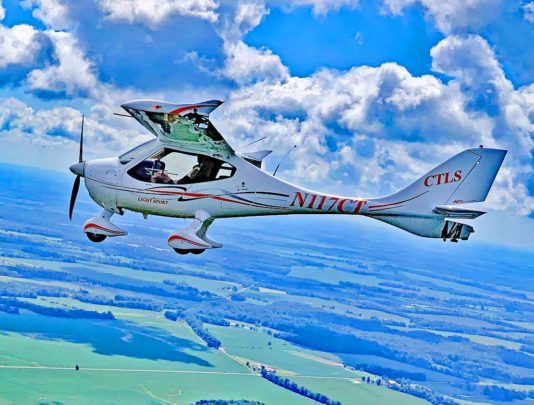 Coordinating closely with
Coordinating closely with 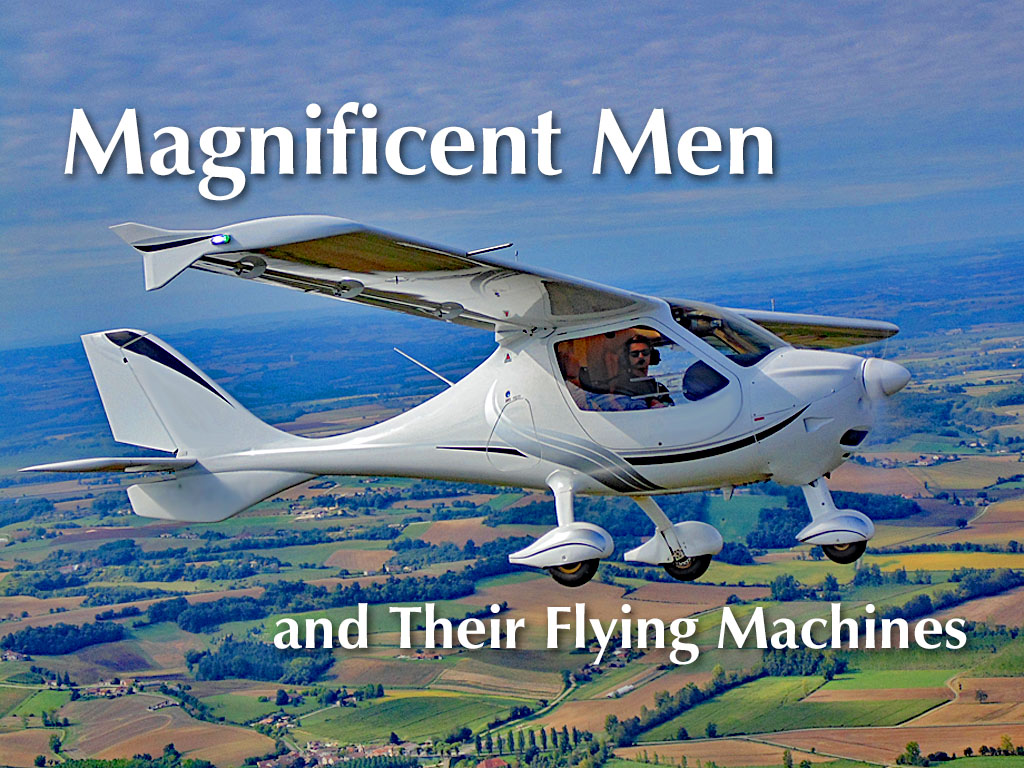
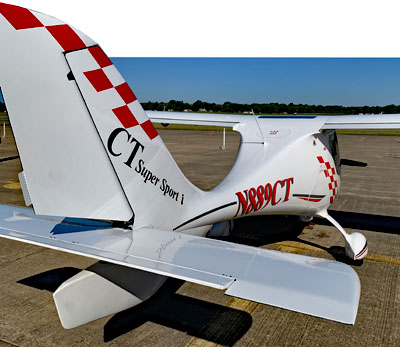 If SuperSport looks familiar to you, it should. It's based on the CTSW but joins several elements of the newer CTLS. In Europe, Flight Design has continued to deliver a lighter model from the CT series to conform to the microlight or European ultralight parameters.
SuperSport is something fresh as it takes a CTSW fuselage and grafts on the CTLS wing; adapts construction from the CTLS gear while still doing it with a single piece, like CTSW; employs tail structure from the newer model; and drafts the
If SuperSport looks familiar to you, it should. It's based on the CTSW but joins several elements of the newer CTLS. In Europe, Flight Design has continued to deliver a lighter model from the CT series to conform to the microlight or European ultralight parameters.
SuperSport is something fresh as it takes a CTSW fuselage and grafts on the CTLS wing; adapts construction from the CTLS gear while still doing it with a single piece, like CTSW; employs tail structure from the newer model; and drafts the 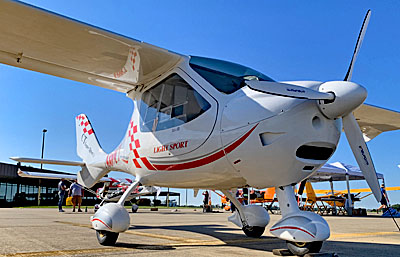 CT SuperSport can be delivered with a 710 pound empty weight that puts it well below many Light-Sport Aircraft and more than 100 pounds lighter than the longer CTLS. "This weight reduction was accomplished by using simplified avionics and equipment plus some lighter parts from the European version of the CT," said Flight Design.
CT SuperSport has the same spacious and wide interior of the CT series but it returns to the "mushroom" instrument panel that does not extend all the way to the cockpit exterior. Seeming to rise out of the floor, you know, like a mushroom, the panel produces a feeling of much greater visibility, especially forward.
Re-entering the CTSW cabin reminded me of the helicopter-like vision afforded by the cockpit design. This came in handy while I flew with the
CT SuperSport can be delivered with a 710 pound empty weight that puts it well below many Light-Sport Aircraft and more than 100 pounds lighter than the longer CTLS. "This weight reduction was accomplished by using simplified avionics and equipment plus some lighter parts from the European version of the CT," said Flight Design.
CT SuperSport has the same spacious and wide interior of the CT series but it returns to the "mushroom" instrument panel that does not extend all the way to the cockpit exterior. Seeming to rise out of the floor, you know, like a mushroom, the panel produces a feeling of much greater visibility, especially forward.
Re-entering the CTSW cabin reminded me of the helicopter-like vision afforded by the cockpit design. This came in handy while I flew with the 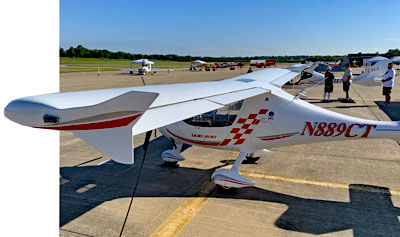 CT SuperSport is some 13 inches shorter than CTLS, Tom Jr. noted and it does not have the hat rack or aft cabin windows of CTLS. CT SuperSport also uses an electric trim for pitch only while CTLS has pitch, aileron, and rudder trim by wheels.
The new, lighter CT model is what I'd agree to call a performance model. It runs close to the top end of the permitted speed range, can fly around 1,000 statute miles, climbs 1,000 feet per minute, yet sips fuel at rates of four gallons per hour, even less if you retard the throttle slightly. It is a lively handling aircraft that still exhibits mild stall characteristics proven by our performing a full regimen of approach and departure stalls plus accelerated stalls in each direction.
Base price of CT SuperSport is: $135,000, some $40,000 less than the flagship CTLS. "Options include night flight equipment and autopilot with Level button," said Flight Design.
CT SuperSport is some 13 inches shorter than CTLS, Tom Jr. noted and it does not have the hat rack or aft cabin windows of CTLS. CT SuperSport also uses an electric trim for pitch only while CTLS has pitch, aileron, and rudder trim by wheels.
The new, lighter CT model is what I'd agree to call a performance model. It runs close to the top end of the permitted speed range, can fly around 1,000 statute miles, climbs 1,000 feet per minute, yet sips fuel at rates of four gallons per hour, even less if you retard the throttle slightly. It is a lively handling aircraft that still exhibits mild stall characteristics proven by our performing a full regimen of approach and departure stalls plus accelerated stalls in each direction.
Base price of CT SuperSport is: $135,000, some $40,000 less than the flagship CTLS. "Options include night flight equipment and autopilot with Level button," said Flight Design.
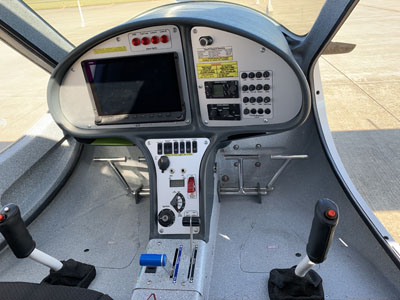 Father and son Gutmanns run
Father and son Gutmanns run  You have two more days of
You have two more days of 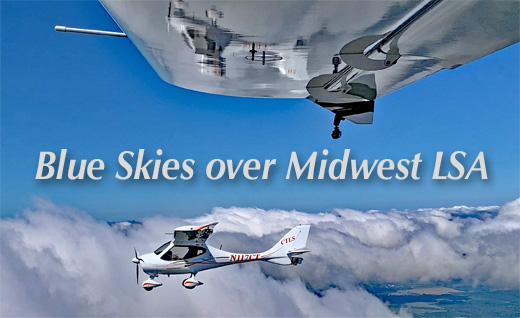
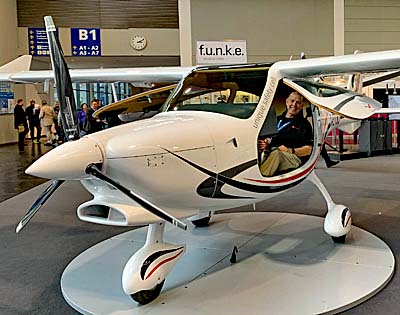 Then came a pause in the juggernaut that is
Then came a pause in the juggernaut that is 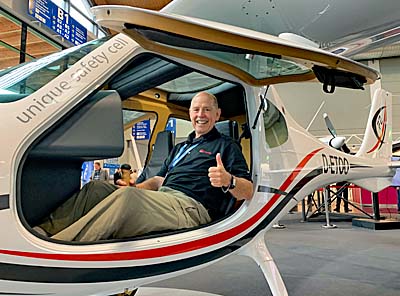 F2's cabin is 3.1 inches wider — now 51 inches wide, among the broadest in the category — and two inches taller than the CT series’ cabins. Door dimensions have also been increased, making for easier entry and exit. The entry door is set 2.3 inches lower than those in the CT series and pilots who are less flexible will appreciate these changes. Four cabin windows and a sunroof in the rear give the cockpit an open feeling and improve overall visibility, boasts Flight Design.
F2 is available with either a 100-horsepower
F2's cabin is 3.1 inches wider — now 51 inches wide, among the broadest in the category — and two inches taller than the CT series’ cabins. Door dimensions have also been increased, making for easier entry and exit. The entry door is set 2.3 inches lower than those in the CT series and pilots who are less flexible will appreciate these changes. Four cabin windows and a sunroof in the rear give the cockpit an open feeling and improve overall visibility, boasts Flight Design.
F2 is available with either a 100-horsepower 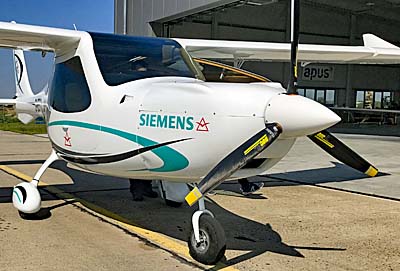 On its first successful first flight, Flight Design said, "Energy consumption for take-off and cruise was within the expected range, and the temperatures in the system were more positive than expected."
Flight Design created F2e with partners
On its first successful first flight, Flight Design said, "Energy consumption for take-off and cruise was within the expected range, and the temperatures in the system were more positive than expected."
Flight Design created F2e with partners 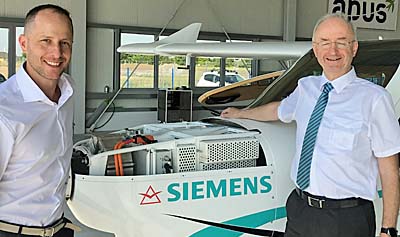
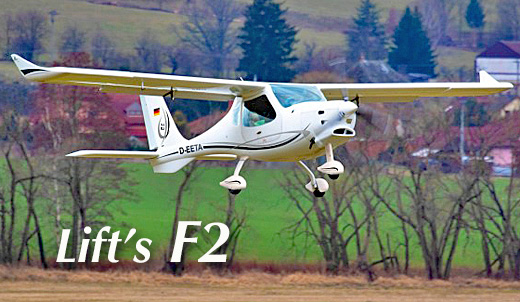
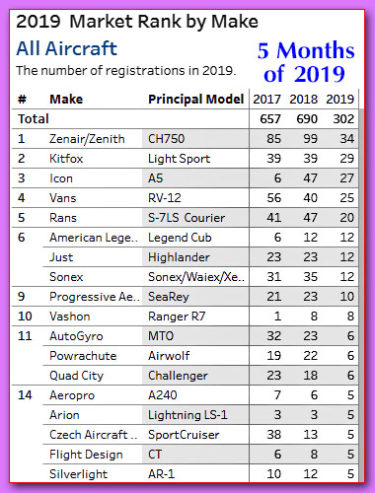 Our first quarterly report in many years should have come about April 1st. It did not. That date came as
Our first quarterly report in many years should have come about April 1st. It did not. That date came as 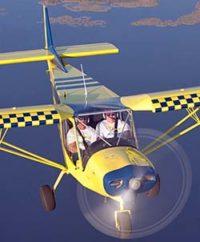 Digging deeper, the chart shows that longtime market leader
Digging deeper, the chart shows that longtime market leader 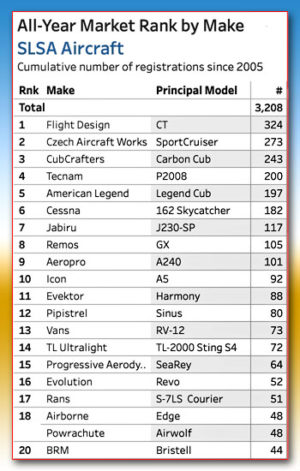 Strong SP kit suppliers include
Strong SP kit suppliers include 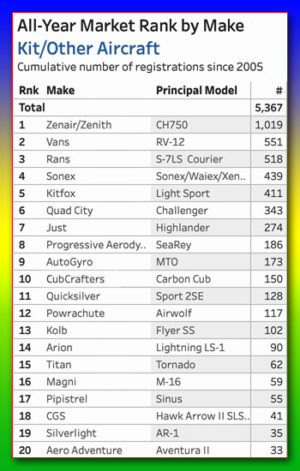 Yet the real surprise comes when you look at our final chart of this article. Kits appear ascendant since 2013, especially when compared to Special LSA that seems to have found a stable registration rate of around 200 aircraft per year. However, when you combine SLSA with Experimental LSA, you can see that all LSA types number closer to 300 units per year, compared to all SP kits at just shy of 400. Specialty registrations like Experimental Exhibition are steady but at a far smaller unit count.
Yet the real surprise comes when you look at our final chart of this article. Kits appear ascendant since 2013, especially when compared to Special LSA that seems to have found a stable registration rate of around 200 aircraft per year. However, when you combine SLSA with Experimental LSA, you can see that all LSA types number closer to 300 units per year, compared to all SP kits at just shy of 400. Specialty registrations like Experimental Exhibition are steady but at a far smaller unit count.
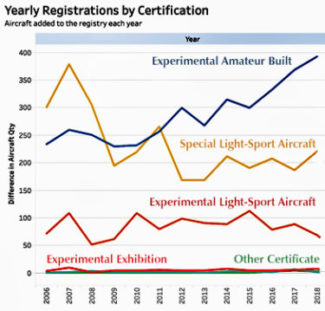 Any ELSA must be shipped from the factory as a bolt-for-bolt copy of the SLSA model, as required under the regulation. No producer can sell an ELSA without first getting approved for a SLSA, so to my mind, combining SLSA and ELSA makes for a fairer comparison to Sport Pilot kit aircraft.
If you love these numbers, please visit
Any ELSA must be shipped from the factory as a bolt-for-bolt copy of the SLSA model, as required under the regulation. No producer can sell an ELSA without first getting approved for a SLSA, so to my mind, combining SLSA and ELSA makes for a fairer comparison to Sport Pilot kit aircraft.
If you love these numbers, please visit 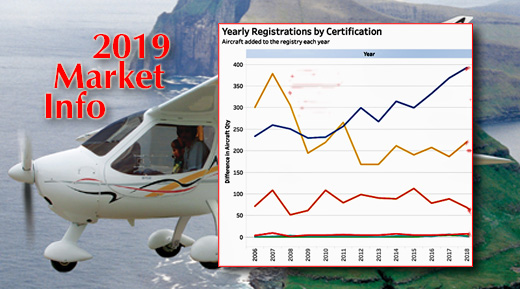
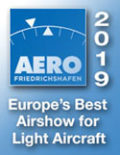 Jetting straight from Sun 'n Fun, we were able to arrive at
Jetting straight from Sun 'n Fun, we were able to arrive at 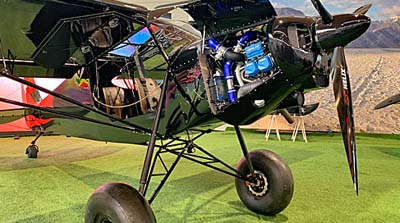 Zlin Ultra with Rotax 915iS
Zlin Ultra with Rotax 915iS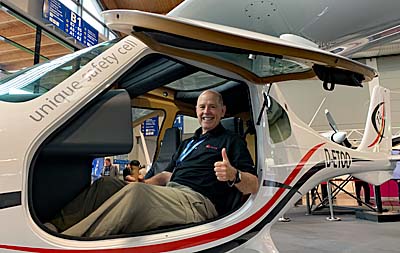
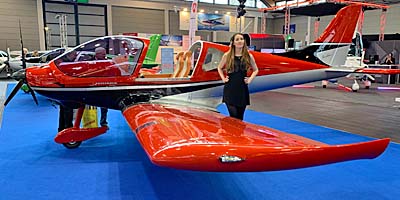 Belmont Aero DW200
Belmont Aero DW200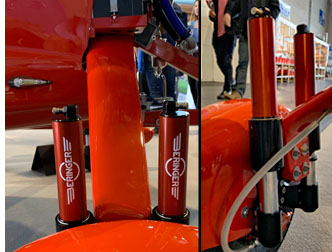 Beringer Everywhere
Beringer Everywhere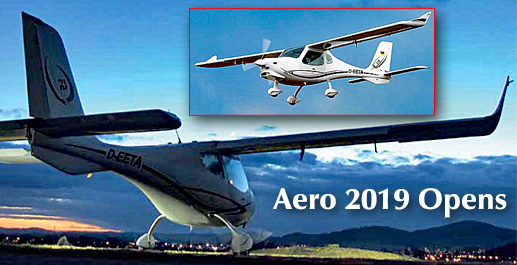
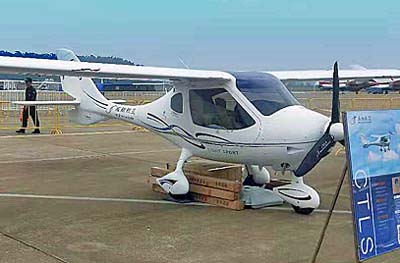 At a major show in China called Zhuhai visitors saw something: a new 6-axis LSA flight simulator. The developer is
At a major show in China called Zhuhai visitors saw something: a new 6-axis LSA flight simulator. The developer is 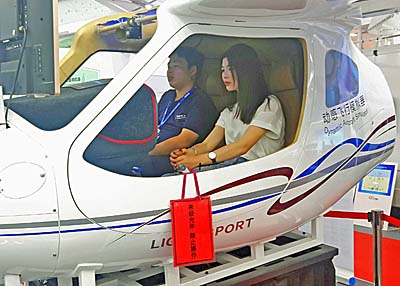 Chinese citizens play games, including flight simulators, as much as (or perhaps even more than) Americans do. Sitting at their computer or using a mobile smartphone or tablet is commonplace.
They know this activity and it may provide a bridge to people going aloft in an actual airplane like CTLS.
Imagine if you had never, ever seen a small plane of any kind. Would you rush to fly it? It's hard for Americans to envision this situation as we have small airplanes everywhere and airports in nearly every town in the nation.
AeroJones may truly be on to something developing their full-motion simulator.
“At the Zhuhai Airshow 2018, our AeroJones 6-axis of motion CTLS simulator was shown for the first time to the public,” said Michael Chou, who handles marketing for the company. He reported that reception to the new simulator was very enthusiastic.
Chinese citizens play games, including flight simulators, as much as (or perhaps even more than) Americans do. Sitting at their computer or using a mobile smartphone or tablet is commonplace.
They know this activity and it may provide a bridge to people going aloft in an actual airplane like CTLS.
Imagine if you had never, ever seen a small plane of any kind. Would you rush to fly it? It's hard for Americans to envision this situation as we have small airplanes everywhere and airports in nearly every town in the nation.
AeroJones may truly be on to something developing their full-motion simulator.
“At the Zhuhai Airshow 2018, our AeroJones 6-axis of motion CTLS simulator was shown for the first time to the public,” said Michael Chou, who handles marketing for the company. He reported that reception to the new simulator was very enthusiastic.
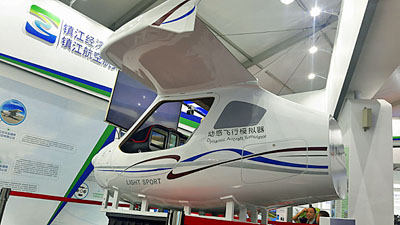
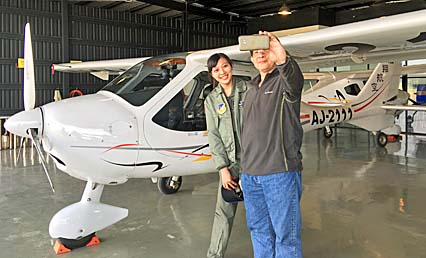 AeroJones is deep into planning for their new aircraft factory in Zhenjiang, China — where, presumably, they will also build the simulator. With the new facility, all manufacturing steps will be easier, less costly, and much more efficient, which will contribute to better values for customers buying the CTLS. Flight schools or other buyers of the modern and sophisticated CTLS will be able to fly to Dalu General Airport to see the factory and take demonstrations flights to confirm their purchase.
At the time the new factory was announced, Mr. Jones Chen said, “We are very pleased about the relationship with leaders of Zhenjiang. We look forward to a long and prosperous relationship."
AeroJones is deep into planning for their new aircraft factory in Zhenjiang, China — where, presumably, they will also build the simulator. With the new facility, all manufacturing steps will be easier, less costly, and much more efficient, which will contribute to better values for customers buying the CTLS. Flight schools or other buyers of the modern and sophisticated CTLS will be able to fly to Dalu General Airport to see the factory and take demonstrations flights to confirm their purchase.
At the time the new factory was announced, Mr. Jones Chen said, “We are very pleased about the relationship with leaders of Zhenjiang. We look forward to a long and prosperous relationship."

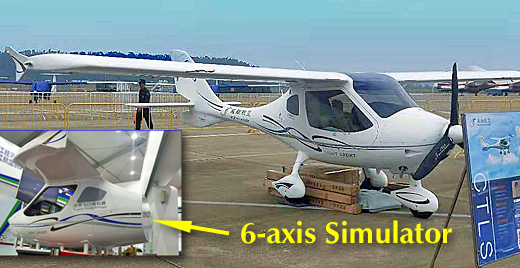
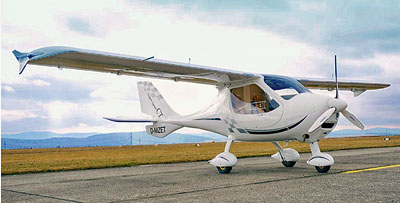 "This variation will now be reintroduced to the Americas," reported Tom Peghiny, President of
"This variation will now be reintroduced to the Americas," reported Tom Peghiny, President of 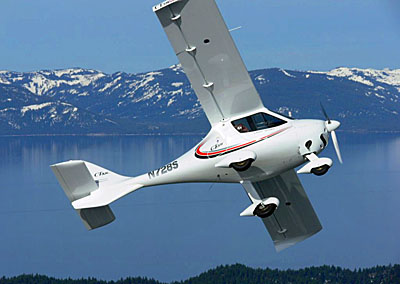
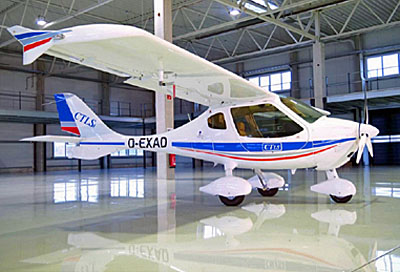 “The approval allows the company to deliver certified aircraft for delivery in Europe and the rest of the world,” said Joerges.
“This is good news for owners of CTLS-ELA aircraft currently operating under EASA’s Permit-to-Fly and for new customers looking for an advanced EASA certified light aircraft,” explained Flight Design general aviation COO, Daniel Guenther. “We can now offer owners of CTLS-ELA aircraft operating across Europe to bring their planes back to Flight Design for upgrading and conformity confirmation to allow them to have a permanent Restricted Flight Certificate (RTC).” Planning for the upgrade program is in the final stages and customers will be informed about the details in February 2019.
Flight Design observed that the company’s CT-series aircraft have been sold around the world since 2008 as Special Light-Sport Aircraft. "CTLSi-ELA brings a well proven platform, the security of an all carbon fiber airframe with an aircraft emergency rescue system and the high technology of all Flight Design aircraft," officials said.
“The approval allows the company to deliver certified aircraft for delivery in Europe and the rest of the world,” said Joerges.
“This is good news for owners of CTLS-ELA aircraft currently operating under EASA’s Permit-to-Fly and for new customers looking for an advanced EASA certified light aircraft,” explained Flight Design general aviation COO, Daniel Guenther. “We can now offer owners of CTLS-ELA aircraft operating across Europe to bring their planes back to Flight Design for upgrading and conformity confirmation to allow them to have a permanent Restricted Flight Certificate (RTC).” Planning for the upgrade program is in the final stages and customers will be informed about the details in February 2019.
Flight Design observed that the company’s CT-series aircraft have been sold around the world since 2008 as Special Light-Sport Aircraft. "CTLSi-ELA brings a well proven platform, the security of an all carbon fiber airframe with an aircraft emergency rescue system and the high technology of all Flight Design aircraft," officials said.
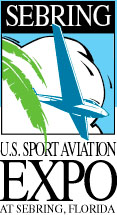 On Wednesday January 23rd, 2019 kicks off with the 15th running of Sebring. This year is also the 15th anniversary of FAA establishing the Sport Pilot / Light-Sport Aircraft sector in American aviation. This accomplishment was the "regulation heard 'round the world" in that many countries have now adapted the ASTM standards for use in their countries making exports from one country to another vastly easier than in the Part 23 certified aircraft world.
On Wednesday January 23rd, 2019 kicks off with the 15th running of Sebring. This year is also the 15th anniversary of FAA establishing the Sport Pilot / Light-Sport Aircraft sector in American aviation. This accomplishment was the "regulation heard 'round the world" in that many countries have now adapted the ASTM standards for use in their countries making exports from one country to another vastly easier than in the Part 23 certified aircraft world.
